Dissolution of the Soviet Union
description: process leading to the late-1991 breakup of the USSR
79 results
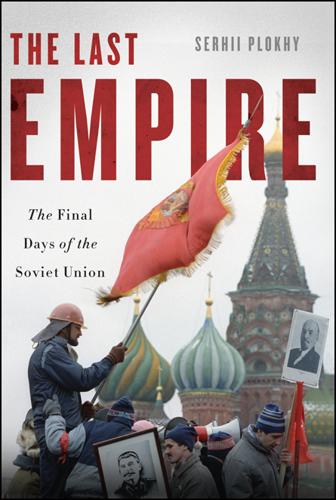
The Last Empire: The Final Days of the Soviet Union
by
Serhii Plokhy
Published 12 May 2014
The Soviet Union had been formed in December 1922 by four Soviet socialist republics: Russia, Ukraine, Belarus, and the Transcaucasian Federation, which included the future republics of Georgia, Armenia, and Azerbaijan. When the Transcaucasian Federation was abolished in 1936, it was up to the three remaining founding members of the Union to decide the question of its future existence—so went Shakhrai’s argument.26 According to Kebich, the statement on the dissolution of the Soviet Union was added to the document at the initiative of Burbulis after the whole text had already been approved by the principals. Burbulis allegedly told a surprised Yeltsin that the document lacked an article. “We should begin by denouncing the union treaty of 1922,” argued Burbulis. “Only then will our accords be absolutely correct from the legal viewpoint.”
…
Yeltsin began by telling Gorbachev that he had tried to sell Kravchuk on any conceivable union treaty, starting with a four- or five-year agreement and ending with Ukraine’s associate membership in a Slavic union. Since Kravchuk had remained obdurate, the Commonwealth of Independent States was the only possible solution under the circumstances, argued Yeltsin. The main issue on Gorbachev’s mind, however, was not the creation of the Commonwealth but the dissolution of the Soviet Union. “The three of you got together, but who gave you any such authorization?” said Gorbachev, according to the account that he gave a group of advisers later that day. “The State Council gave no instructions; the Supreme Soviet gave no instructions.” Yeltsin protested and threatened to leave.
…
Also, as in the case of other European empires, it was the question of extending citizenship rights, particularly voting rights, to residents of the Soviet republics that made the continuation of the empire in its existing form all but impossible.9 Despite Gorbachev’s best efforts to prove otherwise, electoral democracy turned out to be incompatible with the continuing existence of the Soviet state. It is often overlooked that the dissolution of the Soviet Union was an outcome of electoral politics. The Soviet colossus fell less than three years after the introduction of semi-free elections in the former realm of the Romanovs for the first time since 1917, the year of the Bolshevik coup in St. Petersburg. The fall of the Soviet Union took place as a direct outcome of the Ukrainian referendum of December 1, 1991, in which more than 90 percent of those taking part voted for independence.
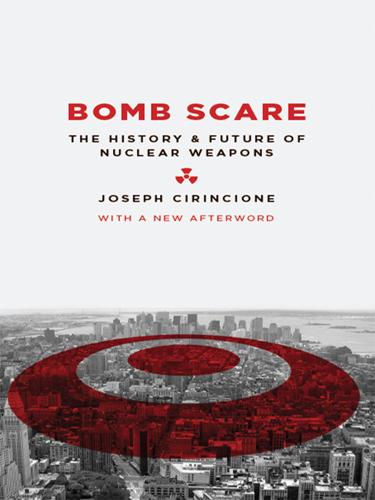
Bomb Scare
by
Joseph Cirincione
Published 24 Dec 2011
While the process was begun by Eisenhower, inspired by Kennedy, and pushed by Johnson, most of the major diplomatic lifting was actually done by Presidents Nixon, Reagan, and Bush, who either negotiated or brought into force almost all the instruments that make up the interlocking network of treaties and arrangements we refer to as the nonproliferation regime. In the 1990s, President Clinton added the Agreed Framework with North Korea that froze that nation’s nascent nuclear program; won Senate ratification of George Bush’s START II treaty and chemical weapons ban; helped denuclearize Belarus, Kazakhstan, and Ukraine after the dissolution of the Soviet Union; won the permanent extension of the NPT in 1995; negotiated and signed the long-sought Comprehensive Nuclear Test-Ban Treaty (CTBT), which is still awaiting entry into force; and implemented the Nunn-Lugar Cooperative Threat Reduction programs to secure and eliminate Russian nuclear weapons and materials.
…
The senior civilians in the defense department weighed in. Powell calls them “a refuge of Reagan-era hard-liners, who stomped all over it, from Paul Wolfowitz on down.” Secretary of Defense Richard Cheney rejected Powell’s proposal. But Powell was not done. In 1991, in the wake of the Gulf War and the dissolution of the Soviet Union, President George H. W. Bush wanted new ideas on nuclear disarmament. Within days, Powell’s staff developed plans to get rid not just of nuclear artillery but all short-range nuclear weapons, such as the Army’s Lance missiles and the Navy’s nuclear torpedoes and depth charges. “The chiefs, now responding to a radically changed world, signed on, as did Paul Wolfowitz and his hard-liners,” says Powell, with some delight, “Cheney was ready to move with the winds of change.”63 On September 27, 1991, President George H.
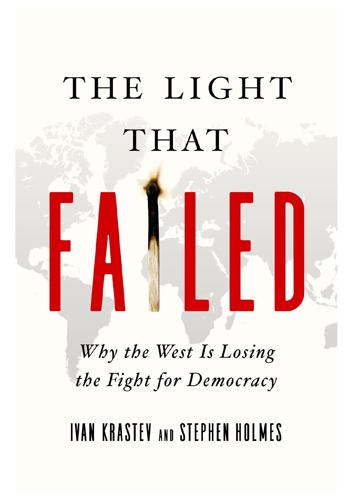
The Light That Failed: A Reckoning
by
Ivan Krastev
and
Stephen Holmes
Published 31 Oct 2019
These keenly resented disappointments, and not merely the gravitational pull of the country’s allegedly authoritarian DNA, explain why ‘Putin came to office determined not to force-feed democracy to Russia.’20 UPENDING THE WESTERN NARRATIVE Putin’s Munich 2007 speech was his Declaration of Independence from the self-flattering historical storyline written by the Cold War victors. The dissolution of the Soviet Union, on 25 December 1991, was not experienced as a deliverance by the Russian people. It was not a shared triumph, but a humiliating debacle celebrated only by mortal foes. By acknowledging without euphemism that liberalism’s victory over communism represented Moscow’s definitive loss of the Cold War, Putin was publicly rejecting the official Western interpretation of 1989–91.
…
He also comparted ‘bourgeois liberalization’ to ‘spiritual pollution’.5 In other words, he justified the 4 June crackdown by citing the Party’s moral duty to crush a mass movement of students and workers who hoped to drag China into the Age of Imitation.6 This violent repression, precisely in 1989, of a movement aimed at imitating Western-style freedoms raises the question: Why didn’t the Tiananmen events lead more Western commentators to doubt that the end of Eastern European and eventually Soviet communism had in fact established liberal democracy as the only viable model for political reform? One reason is that, coincidentally, June 1989 also witnessed Solidarity’s victory in the first free elections in Poland. This small triumph of the Polish opposition kick-started a process that led to the dissolution of the Soviet Union itself in December 1991. The dramatic cascade of events unfolding on Europe’s eastern frontier contributed significantly to the impression that, while it was a tragedy and a political setback, Tiananmen was of negligible importance to world history. Political repression in China was generally viewed not as a sign of strength but as a symptom of the leadership’s weakness and insecurity.

24/7: Late Capitalism and the Ends of Sleep
by
Jonathan Crary
Published 3 Jun 2013
Any social turbulence whose primary sources are in the use of social media will inevitably be historically ephemeral and inconsequential. Chantal Akerman’s film D’Est (From the East), made in 1992 and early 1993, carries a heightened self-consciousness about the circumstances of this weighty historical moment. Shot mainly in Poland and Russia in the year and a half following the dissolution of the Soviet Union, it discloses a world in suspension, on the edge of an undetermined future, yet still weighed down by long-standing patterns and habits. Using very long takes, it is an extended portrayal of certain textures of everyday life, sometimes suggesting a Sartrean seriality. In her essay on D’Est, Akerman famously declared that she felt the need to make the film “while there’s still time” (“tant qu’il en est encore temps”).11 In one sense, she meant that she had to finish the project before it was too late, before cultural and economic forces transformed the subject of her work into something different, even unrecognizable.
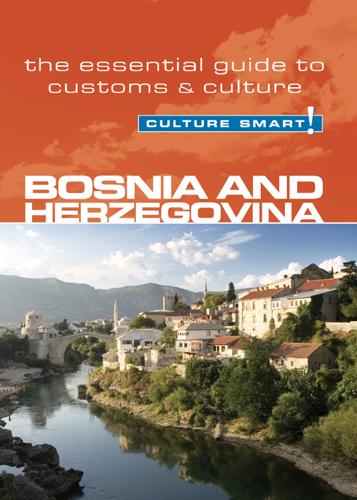
Bosnia & Herzegovina--Culture Smart
by
Elizabeth Hammond
Published 11 Jan 2011
Slobodan Milošević gained power among the Serbian Communists during this time, and maintained popularity among Serbs through a strongly nationalist set of policies. He revoked the autonomy of Kosovo and Vojvodina, causing massive protests from those who lived there. After the fall of the Berlin Wall and the dissolution of the Soviet Union, some of the Yugoslav republics, namely Croatia and Slovenia, started pushing for more independence. Croatian nationalism was growing ever more radical in competition with Milošević’s increasingly brazen calls for a Greater Serbia. A turning point occurred in 1989 at Kosovo Polje, a town that held special significance for Serbs as the site of a battle and the death of a Serb hero, Prince Lazar, in 1389.
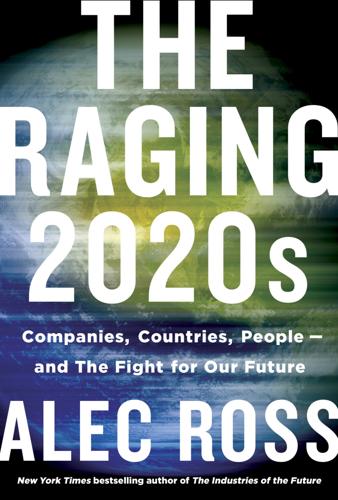
The Raging 2020s: Companies, Countries, People - and the Fight for Our Future
by
Alec Ross
Published 13 Sep 2021
Each side of the Iron Curtain developed its own unique sets of economies, and for decades there was little crossover between the two. American consumers drove Chevys, drank Budweiser, and smoked Marlboros. Their Soviet counterparts drove Ladas, drank Zhigulevskoye, and smoked Belomorkanals. When the Cold War ended, however, the rules that had held for centuries started to change rapidly. With the dissolution of the Soviet Union, capitalism became the triumphant economic model. In the “end of history” euphoria, the United States, United Kingdom, and other Western democracies rolled back many of the financial and legal guardrails that tethered businesses to the government. They simultaneously set out to build the infrastructure for a global economy based on free-market capitalism.
…
As foreign investors flocked to these free-market hubs, China’s exports skyrocketed and its economy began to grow. China turned its back on economic communism some ten years ahead of the Soviet bloc, and the word communist ceased to have any meaning tied to its actual ideological origins. But while Moscow’s economic reforms were soon followed by the dissolution of the Soviet Union, Beijing managed to open the Chinese economy without weakening the Communist Party’s grip on political power. The story of China’s ascent over the last forty years is by now common knowledge, but that does not make it any less remarkable. The country sustained an average annual growth rate of 9.5 percent for a full forty years, a hot streak that the World Bank characterized as “the fastest sustained expansion by a major economy in history.”
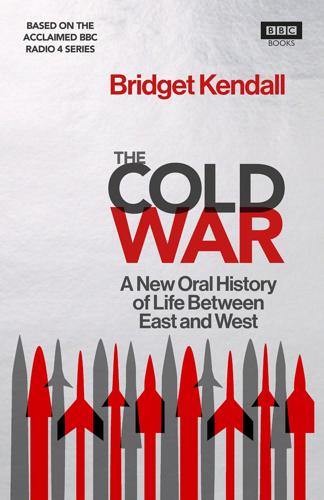
The Cold War: Stories From the Big Freeze
by
Bridget Kendall
Published 14 May 2017
The most important goal for all movements in Estonia was the same: to get freedom back. In the end, the restoration of independence went through this scenario of ending occupation, restoring independence, without achieving the dissolution of the Soviet Union. The dissolution of the Soviet Union came afterwards following the logic created by Yeltsin, because Yeltsin wanted to have a free and independent Russia and that was really the engine which really brought the dissolution of the Soviet Union. Andrus Öövel was asked to manage the security at live events organised by the newly formed Popular Front. Our task was to guarantee that everybody who came to the meetings could go back home similarly well like he came.
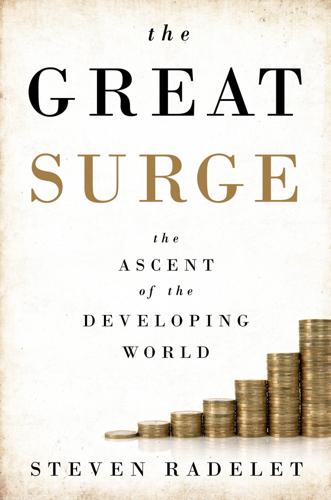
The Great Surge: The Ascent of the Developing World
by
Steven Radelet
Published 10 Nov 2015
Mao Tse-tung’s misguided attempt to force rapid industrialization and extract food supplies from the countryside led to widespread famine and the deaths of more than 40 million people from starvation. The wars in Korea in the 1950s, across Central America in the 1980s, and in the Democratic Republic of the Congo over the past two decades all undermined health, not to mention development more broadly. Two other major disruptions occurred in the 1990s. First, the dissolution of the Soviet Union created economic and social upheavals that undermined health systems in many countries for several years, and progress on health receded before beginning to recover a decade later. Second, the HIV/AIDS pandemic exploded around the world in the 1980s, wreaking havoc in many countries, with extraordinary devastation across central, eastern, and southern Africa.
…
Unnoticed by all but a few on that same day, faraway South-West Africa—soon to be renamed Namibia—ushered in Africa’s shift toward democracy by electing its first National Assembly and gaining its independence from South African rule. Apartheid was about to collapse as well. The demise of Communism, the end of the Cold War, and the dissolution of the Soviet Union together created a decisive moment in world history: global power structures, economic relationships, and powerful ideas about governance and economics all changed substantially.1 These tectonic shifts enhanced the global conditions for development, creating new opportunities for major transformation and affecting developing countries in ways that are continuing to play out today.
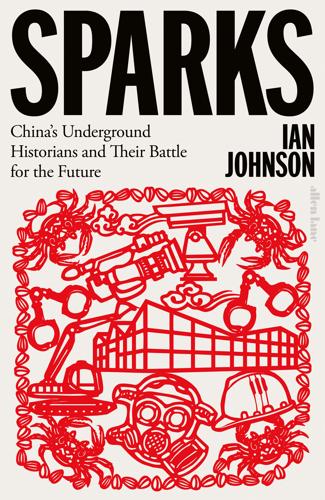
Sparks: China's Underground Historians and Their Battle for the Future
by
Ian Johnson
Published 26 Sep 2023
Their ideals and convictions wavered: Chris Buckley, “Vows of Change in China Belie Private Warning,” New York Times, 14 February 2013, https://www.nytimes.com/2013/02/15/world/asia/vowing-reform-chinas-leader-xi-jinping-airs-other-message-in-private.html. 10. Later books and videos repeated concerns about the fall of the Soviet Union: See, for example,”Lishi xuwuzhuyi yu sulian jieti 历史虚无主义与苏联解体” [Historical Nihilism and the Dissolution of the Soviet Union] Youku Video, accessed 28 April 2022, https://v.youku.com/v_show/id_XNTg0NDEwNTk2OA==.html. 11. Document Number Nine: For a reliable translation, see “Document 9: A China File Translation: How Much Is a Hardline Party Directive Shaping China’s Current Political Climate?” ChinaFile, 8 November 2013, https://www.chinafile.com/document-9-chinafile-translation#start. 12.
…
Blood Letters: The Untold Story of Lin Zhao, a Martyr in Mao’s China. New York: Basic Books, 2018. Lifton, Robert Jay. Thought Reform and the Psychology of Totalism: A Study of “Brainwashing” in China. New York: Norton, 1961. “Lishi xuwuzhuyi yu sulianjieti,” 历史虚无主义与苏联解体 [Historical nihilism and the dissolution of the Soviet Union]. April 23, 2022. Youku Video. https://v.youku.com/v_show/id_XNTg0NDEwNTk2OA==.html. Liu, Qiong 刘琼. “Xi Jinping: chengqianqihou jiwangkailai jixuchaozhe zhonghuaminzu weidafuxing mubiao fenyongqianjin” 习近平:承前启后 继往开来 继续朝着中华民族伟大复兴目标奋勇前进 [Xi Jinping: Inherit the past and usher in the future, continue to march towards the great rejuvenation of the Chinese nation].
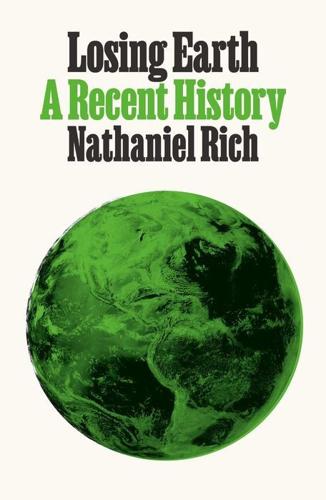
Losing Earth: A Recent History
by
Nathaniel Rich
Published 4 Aug 2018
But the negotiation of the first IPCC accord continued for another two and a half years before it was finalized at the 1992 Rio Earth Summit, the largest gathering of world leaders in history. (Reilly led the U.S. delegation; George H. W. Bush, after some equivocation, attended.) At any point Bush could have demanded a binding treaty, and likely compelled one: the United States, after the dissolution of the Soviet Union, not only dominated the world order economically and militarily, but was responsible annually for more than one-third of humanity’s carbon emissions. Bush’s chief scientist, D. Allan Bromley, after his week with Reilly in Noordwijk, grew increasingly supportive of major climate policy, pushing Bush to reconsider carbon taxes and cap-and-trade plans; others in the administration joked that Reilly had brainwashed him.
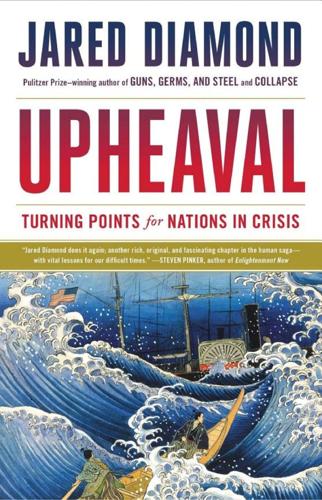
Upheaval: Turning Points for Nations in Crisis
by
Jared Diamond
Published 6 May 2019
Perry’s career underlying his expertise about nuclear issues includes his analyses of Soviet nuclear capabilities in Cuba for President Kennedy each day during the 1962 Cuban Missile Crisis; serving as U.S. secretary of defense from 1994 to 1997; negotiating nuclear and other issues with North Korea, the Soviet Union / Russia, China, India, Pakistan, Iran, and Iraq; negotiating the dismantling of the former Soviet nuclear facilities in Ukraine and Kazakhstan after the dissolution of the Soviet Union; and much else. One can identify four sets of scenarios culminating in the detonation of nuclear bombs by governments (first three scenarios) or by non-governmental terrorist groups (fourth scenario). The scenario most often discussed has been a planned surprise attack by one nation with a nuclear arsenal on another nation with a nuclear arsenal.
…
While preparing for the 2001 World Trade Center attack, Al Qaeda did seek to acquire a nuclear weapon for use against the U.S. Perhaps terrorists could steal uranium or a bomb without the help of the bomb-producing country, if security at the bomb storage site were inadequate. For instance, at the time of the dissolution of the Soviet Union, 600 kilograms of former-Soviet bomb-quality uranium remained in the Soviet republic that became newly independent Kazakhstan. The uranium was stored in a warehouse secured by little more than a barbed-wire fence and could easily have been stolen. But more likely, terrorists might obtain bomb material by an “inside job,” i.e., with the help of bomb storage personnel or leaders of Pakistan, North Korea, or Iran.
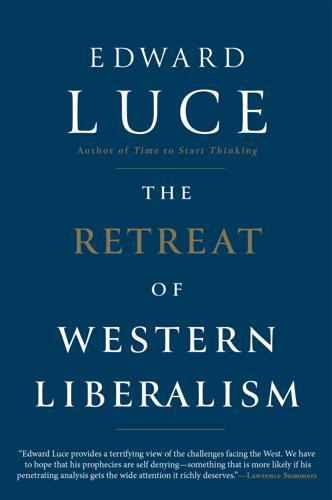
The Retreat of Western Liberalism
by
Edward Luce
Published 20 Apr 2017
Yevgeny Primakov was displaced as prime minister in 1999 by Vladimir Putin. While my friends and I had danced on the rubble of the Berlin Wall, a brooding Putin had watched his world crumbling from 130 miles away, at his KGB office in Dresden, a city in what was still East Germany. Later he would describe the dissolution of the Soviet Union as the ‘greatest geopolitical tragedy of the twentieth century’. It was Primakov who championed the term multipolarity in what at the time seemed like a vain bid to dampen America’s oceanic post-Cold War triumphalism. Putin picked up the concept and made it his own. As the world’s one indispensable power, Americans never warmed to the idea of multipolarity.
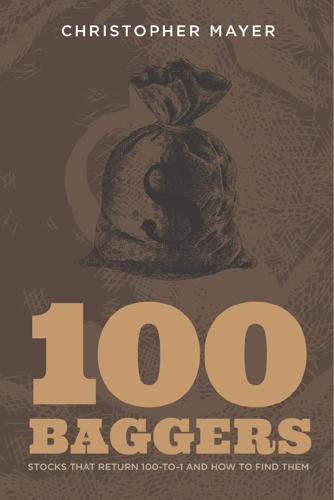
100 Baggers: Stocks That Return 100-To-1 and How to Find Them
by
Christopher W Mayer
Published 21 May 2018
In his 1994 shareholder letter, Buffett showed he had taken Graham’s lesson to heart: We will continue to ignore political and economic forecasts which are an expensive distraction for many investors and businessmen. Thirty years ago, no one could have foreseen the huge expansion of the Vietnam War, wage and price controls, two oil shocks, the resignation of a president, the dissolution of the Soviet Union, a one-day drop in the Dow of 508 points, or treasury bill yields fluctuating between 2.8% and 17.4%. . . . But, surprise—none of these blockbuster events made the slightest dent in Ben Graham’s investment principles. MISCELLANEOUS MENTATION ON 100-BAGGERS 1 45 I often hear sweeping pronouncements made about the stock market and where it’s going from pundits and investors everywhere, as I’m sure you do too.
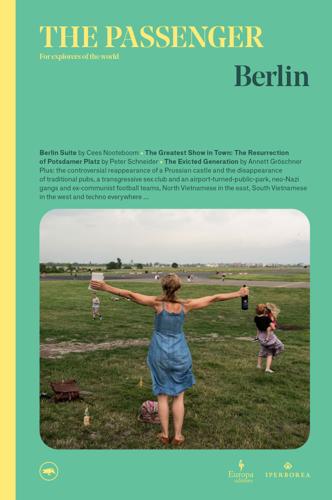
The Passenger: Berlin
by
The Passenger
Published 8 Jun 2021
Shortly before the fall of the Wall, Edzard Reuter, the CEO of the Daimler Group at the time, bought fifteen thousand acres (61,000 square metres) to the southwest of Potsdamer Platz from the West Berlin Senate. The sale, which was made at a time when hardly anyone believed in an imminent end to the divided state of Germany let alone in the dissolution of the Soviet Union, was a bold – a prophetic – investment. Indeed, it was driven more by a political vision than by commercial interests. Edzard Reuter, who was the son of West Berlin’s legendary first mayor, Ernst Reuter, wanted to build not only a new Daimler headquarters here but a whole new urban area, which would – at some distant point in the future – be connected to East Berlin.
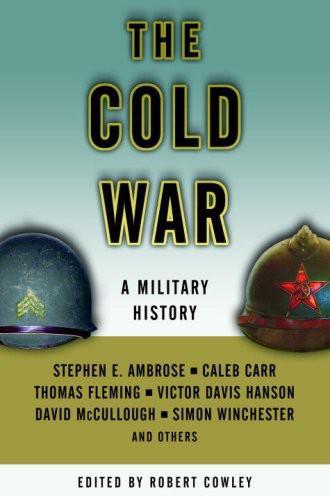
The Cold War
by
Robert Cowley
Published 5 May 1992
As far as most people knew, those overflights had been made only by U-2s, beginning in 1956. But in fact, U-2 aerial reconnaissance was a continuation of a secret effort that had been going on since the early 1950s. Not until the last ten years has the true story begun to surface. As R. Cargill Hall, a noted air force historian, writes, “Since the dissolution of the Soviet Union fragmentary accounts have appeared. Too frequently, however, they have turned on misperceptions and questionable interpretations. Armed with a few interviews and still fewer archival records from the Cold War, authors have provided Oliver Stone–like conspiracies.” When Hall's “The Truth About Overflights” appeared in MHQ in 1997, it was the first authoritative discussion of the subject.
…
Between 1951 and 1956, Presidents Truman and Eisenhower and Prime Minister Churchill periodically and on a case-by-case basis authorized these military overflights of the U.S.S.R. and other “denied territory.” The risks were great, but so were the intelligence payoffs. Even today many of the men who took part in the missions (and who were sworn to secrecy) are reluctant to talk about them. Since the dissolution of the Soviet Union in 1991, fragmentary accounts have appeared. Too frequently, however, they have turned on misperceptions and questionable interpretations. Armed with a few interviews and still fewer archival records from the Cold War, authors have provided Oliver Stone–like conspiracies. Some have alleged that the missions were the sole responsibility of the commander in chief of the Strategic Air Command, General Curtis LeMay—who, they charge, sought through overflights to blackmail the Soviet Union or provoke it into starting World War III.
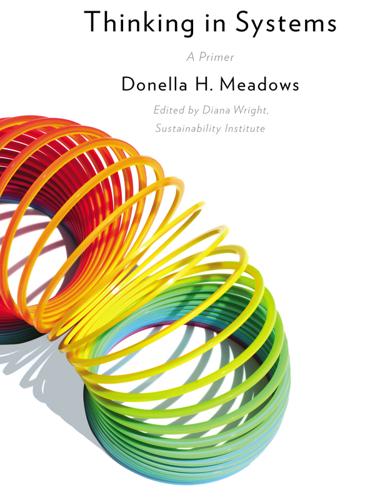
Thinking in Systems: A Primer
by
Meadows. Donella
and
Diana Wright
Published 3 Dec 2008
Although Dana’s original manuscript has been edited and restructured, many of the examples you will find in this book are from her first draft in 1993. They may seem a bit dated to you, but in editing her work I chose to keep them because their teachings are as relevant now as they were then. The early 1990s were the time of the dissolution of the Soviet Union and great shifts in other socialist countries. The North American Free Trade Agreement was newly signed. Iraq’s army invaded Kuwait and then retreated, burning oil fields on the way out. Nelson Mandela was freed from prison, and South Africa’s apartheid laws were repealed. Labor leader Lech Walesa was elected president of Poland, and poet Václav Havel was elected president of Czechoslovakia.

The Secret War Between Downloading and Uploading: Tales of the Computer as Culture Machine
by
Peter Lunenfeld
Published 31 Mar 2011
So let us return to VDNX and Sears today, after this “great change.” By the mid-1990s, the USSR was no more, and north of Moscow, in a city once again in a country called Russia, VDNX was transformed through that peculiarly post-Soviet mix of perestroika, privatism, and gangster capitalism. As one observer commented soon after the dissolution of the Soviet Union, the “exhibitions pavilions, built as palaces for the people, have been transformed into communal apartments of commerce: VDNX is now a bizarre shopping mall. Many of the most opulent pavilions have become congested labyrinths of tiny stalls that sell a jumble of consumer goods.” By the turn of the millennium, the Space Exploration Pavilion was full of used cars, although there were a few satellite and rocket models hanging from the roof above them.

The Long Game: China's Grand Strategy to Displace American Order
by
Rush Doshi
Published 24 Jun 2021
The attempt by the U.S. anti-China forces to evolve us will not change.”49 Moreover, Jiang argued that “the United States is trying to construct a unipolar world . . . and dominate international affairs” and that, instead of declining, “for a long time, the United States will maintain significant advantages in politics, economics, science and technology, and military affairs.”50 The continuity of these views across two of China’s most important foreign policy speeches was remarkable. Then, in a speech to the Central Military Commission roughly ten years after Tiananmen, Jiang emphasized that these themes had not diminished in salience. “After undergoing drastic changes in Eastern Europe, the dissolution of the Soviet Union, and the end of bipolarity in the late 1980s and early 1990s,” he remarked, “setbacks in the development of worldwide socialism caused us to face unprecedented pressure.”51 In particular, “hostile international forces have threatened to bury communism in the world, arguing that China will follow the footsteps of the Soviet Union and Eastern European countries and will soon collapse.
…
Once the United States was involved, China reversed course and sought to weaken EAS relative to APT.117 “Under such circumstances,” Wu Xinbo noted, “China expects APT to be the main venue for the building of an East Asian community.”118 For example, China fought to remove the term “East Asian community” from the declaration signed at the first EAS summit, though it continued to support the phrase in APT.119 As an acknowledgment of this small tactical victory, the first East Asia Summit declaration stated that “the East Asian region had already advanced in its efforts to realize an East Asian community through the ASEAN+3 process.”120 Security Benefits China also used its position within ASEAN-related forums to (1) weaken US influence in Asia; and (2) reassure its neighbors. First, China sought to promote norms, like its “New Security Concept” that would undermine US alliances after the trifecta. Wu Baiyi, deputy director of research at the China Foundation for International and Strategic Studies, wrote that work on the concept began after “the dissolution of the Soviet Union,” when “policy planners and academics began working quietly to amend the country’s security strategy.” They finally debuted the concept in 1996 unofficially in Track II dialogues.121 As Chu Shulong argued, key aspects of the concept “denounce the alliance approach” and, at a conference held in Beijing by scholars to discuss it and summarized officially in the Party daily Renmin Ribao, participants “identified ‘four nos’ at the center of the concept: no hegemonism, no power politics, no arms race, and no military alliance.”122 Another Renmin Ribao article said the concept stood against Cold War thinking, including alliances, economic sanctions, and arms races.123 In March 1997, China formally introduced the concept at ASEAN when it hosted and chaired the ARF intersessional working group on CBMs in Beijing; there, it “lambasted bilateral alliances, particularly the US-Japanese alliance, as destabilizing and representative of old-style, Cold War thinking” and put forward several motions that targeted the US military.124 Then, Foreign Minister Qian Qichen put forward the concept at the 4th ASEAN Regional Forum in July 1997 and several other gatherings.
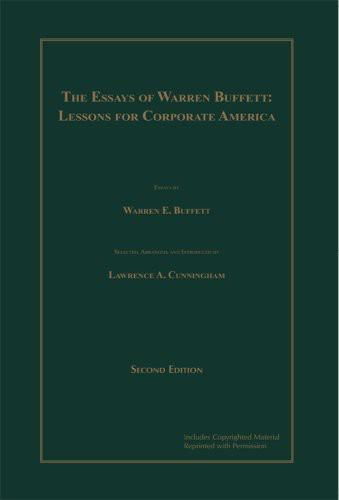
The Essays of Warren Buffett: Lessons for Corporate America
by
Warren E. Buffett
and
Lawrence A. Cunningham
Published 2 Jan 1997
We will continue to ignore political and economic forecasts, which are an expensive distraction for many investors and businessmen. Thirty years ago, no one could have foreseen the huge expansion of the Vietnam War, wage and price controls, two oil shocks, the resignation of a president, the dissolution of the Soviet Union, a one-day drop in the Dow of 508 points, or treasury bill yields fluctuating between 2.8% and 17.4%. But, surprise-none of these blockbuster events made the slightest dent in Ben Graham's investment principles. Nor did they render unsound the negotiated purchases of fine businesses at sensible prices.
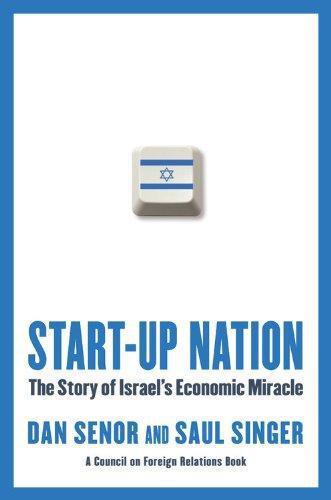
Start-Up Nation: The Story of Israel's Economic Miracle
by
Dan Senor
and
Saul Singer
Published 3 Nov 2009
And because Netafim’s technology became so indispensable, a number of foreign governments that historically had been hostile to Israel began to open diplomatic channels. Netafim is active in former Soviet bloc Muslim states like Azerbaijan, Kazakhstan, and Uzbekistan, which led to warmer relations with Israel’s government after the dissolution of the Soviet Union. In 2004, then trade minister Ehud Olmert tagged along on a Netafim trip to South Africa in the hope of forming new strategic alliances there. The trip resulted in $30 million in contracts for Netafim, plus a memorandum of understanding between the two governments on agriculture and arid lands development.
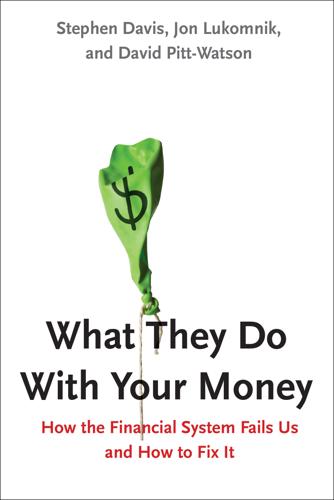
What They Do With Your Money: How the Financial System Fails Us, and How to Fix It
by
Stephen Davis
,
Jon Lukomnik
and
David Pitt-Watson
Published 30 Apr 2016
We don’t have any doubt about this.”26 Their approach echoes the work of the sociologist Max Weber, who attributed Europe’s economic success after the renaissance to the moral values imbued by Protestantism; hard work and accumulation became legitimate moral goals. More recently, economists have tried to discover why some Eastern European countries have made a successful transition to capitalism following the dissolution of the Soviet Union, while others have not. After testing a litany of potential explanations, they concluded, in the words of the journalist David Brooks, “Finally, and most important, there is the level of values. A nation’s economy is nestled in its moral ecology. Economic performance is tied to history, culture and psychology.”27 This analysis creates a problem for those who try to describe economics in purely mathematical terms.
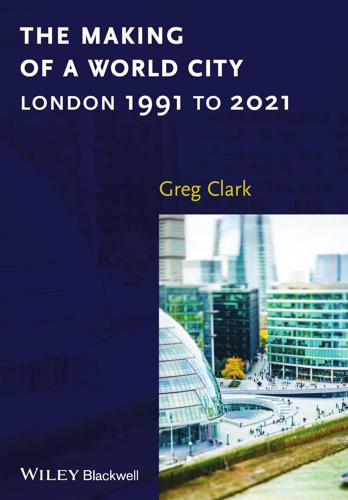
The Making of a World City: London 1991 to 2021
by
Greg Clark
Published 31 Dec 2014
“Financial globalisation has survived the financial excesses and lives on,” announced Will Hutton in 1991, even if “London’s place at the centre of things could all too easily fade in the decade to come” (Hutton, 1991: xi). Uncertainty was understandable, given the anticipation of the Single European Market in 1992, the formulation of the Maastricht Treaty, the replacement of Margaret Thatcher as Prime Minister by John Major, and the imminent dissolution of the Soviet Union. Understanding how to protect the city’s fragile position on this unfamiliar and turbulent world stage was to become the number one priority, not least for the purposeful members of the London Planning Advisory Committee. 3 The 1991 London: World City report and its message about London London: World City, with its HMSO livery, was the first government-published report that recognised that London was developing an important set of international roles as a world city (LPAC, 1991).
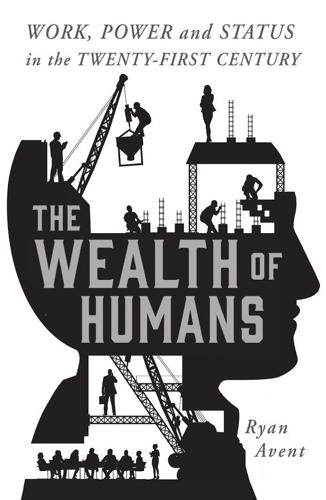
The Wealth of Humans: Work, Power, and Status in the Twenty-First Century
by
Ryan Avent
Published 20 Sep 2016
And nations fought bitter, unimaginably costly wars, culminating in the great ideological war that began in 1939 and claimed tens of millions of lives. That war, in turn, led to the development of weapons that threatened the very survival of humanity, and, it could be argued, did not truly end until the dissolution of the Soviet Union in 1991. The path to prosperity was a long and brutal one. But, at the end of that road there was prosperity – for much of the world’s population at least. A century ago, when the world was already more than a century into the industrial revolution, many of its benefits had yet to reach my great-grandfather, who toiled in poverty as a blacksmith in southern Virginia.
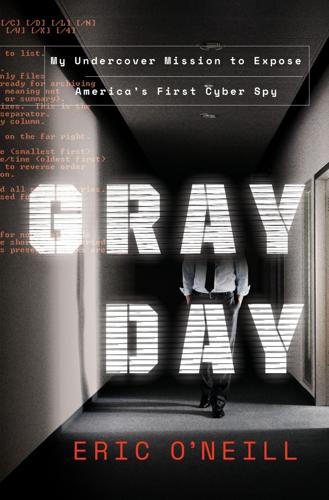
Gray Day: My Undercover Mission to Expose America's First Cyber Spy
by
Eric O'Neill
Published 1 Mar 2019
In the late 1980s, massive independence protests swept across the Caucasus and the Baltic states, and soon the USSR’s constituent republics began to secede. On August 18, 1991, military and government hardliners staged a coup against Mikhail Gorbachev. The coup collapsed within days, but the match continued to burn. In December 1991, Gorbachev announced the dissolution of the Soviet Union and his resignation as president. Television audiences across the former USSR watched as Boris Yeltsin lowered the hammer-and-sickle flag from atop the Kremlin for the last time and raised the tricolor flag as president of a newly independent Russian state. During all this upheaval, former KGB spymasters—now out of a job—were raiding the agency’s file cabinets.
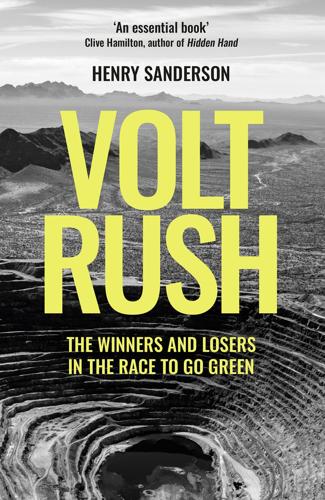
Volt Rush: The Winners and Losers in the Race to Go Green
by
Henry Sanderson
Published 12 Sep 2022
It was under Pinochet that SQM had been privatised, due to the influence of a group of Chilean economists nicknamed ‘the Chicago boys’, after the Chicago school of free market economics where many of them had studied. Like the Russian oligarchs who grew rich with the privatisations of the 1990s after the dissolution of the Soviet Union, Ponce Lerou had also ended up with control by buying up shares that had originally belonged to the workers. It seemed bitterly unfair to people that one of the main people set to cash in on the lithium boom was Ponce Lerou, the yerno (son-in-law). But he had no intention of stepping aside.
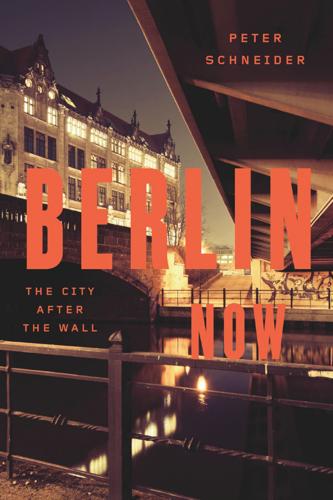
Berlin Now: The City After the Wall
by
Peter Schneider
and
Sophie Schlondorff
Published 4 Aug 2014
Shortly before the fall of the Wall, Edzard Reuter, the CEO of the Daimler Group at the time, bought fifteen thousand acres to the southwest of Potsdamer Platz from the West Berlin Senate. The sale, which was made at a time when hardly anyone believed in an imminent end to the divided state of Germany, let alone in the dissolution of the Soviet Union, was a bold—a prophetic—investment. Indeed, it was driven more by a political vision than by commercial interests. Edzard Reuter, who was the son of West Berlin’s legendary first mayor, Ernst Reuter, wanted to build not only a new Daimler headquarters here but a whole new urban area, which would—at some distant point in the future—be connected to East Berlin.
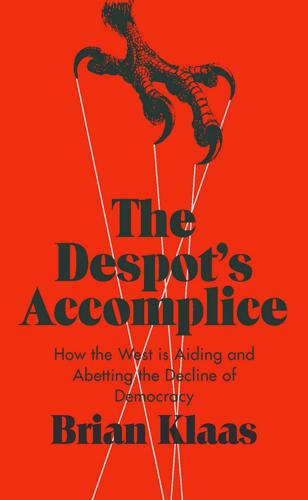
The Despot's Accomplice: How the West Is Aiding and Abetting the Decline of Democracy
by
Brian Klaas
Published 15 Mar 2017
But one of the major drivers of democratization in places like Latvia was the European Union’s extraordinarily successful program of political conditionality for accession. Put simply, the policy that only democracies could join the European Union enticed bordering states to become democracies. In Latvia, there was already a strong drive for democracy right after the dissolution of the Soviet Union. The European Union’s insistence on maintaining and consolidating democracy ensured that Latvian politicians never took their eye off the prize; they knew that any backsliding away from democracy would jeopardize their application to tap into the immense benefits of being formally part of Europe.
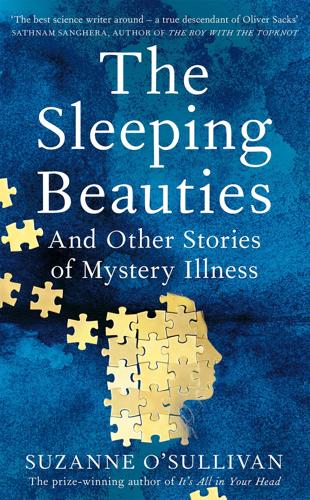
The Sleeping Beauties: And Other Stories of Mystery Illness
by
Suzanne O'Sullivan
Published 31 Mar 2021
The shutdown only lasted twenty-four hours. The next morning, social and news media was up and running again, but not until the flashpoint of potential democratic demonstration had passed and the election had been won by Nazarbayev’s hand-picked successor, Tokayev. The thirty years that followed the dissolution of the Soviet Union, that period that had changed the ‘white grave’ into Nur Sultan, had had the opposite effect on Krasnogorsk. The politics of the country had been fundamental in creating for the people of Krasnogorsk the circumstances that would lead to the town’s downfall. In the 1960s, approximately 6,500 people lived in Krasnogorsk.
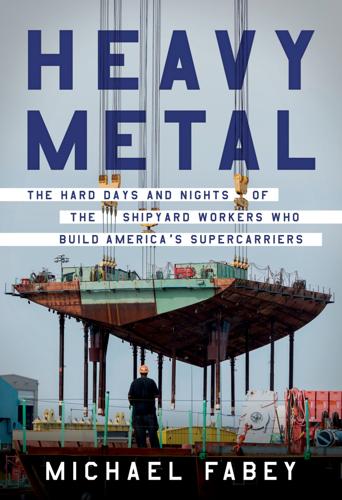
Heavy Metal: The Hard Days and Nights of the Shipyard Workers Who Build America's Supercarriers
by
Michael Fabey
Published 13 Jun 2022
McCain, the powerful chairman of the Senate Armed Services Committee, or SASC, as it was commonly known in DC. A number of Pentagon officials and lawmakers wondered why the US needed to keep building and deploying the nuclear-powered behemoths. After the collapse of the Berlin Wall and dissolution of the Soviet Union, the US Navy emerged as the uncontested king of the seas. Why the need for an expensive aircraft carrier? Many powerful members of the House and the Senate saw the current Nimitz-class carriers designed during the Vietnam era as floating anachronisms and money sponges. A long line of polished, dedicated, and decorated admirals knew what it felt like to be dressed down by Senator McCain during an SASC hearing, his finger pointing, his voice rising, his ire building, like a prosecutor, interrogating, accusing, and damning.
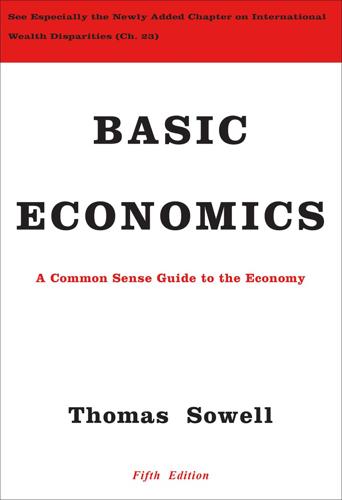
Basic Economics
by
Thomas Sowell
Published 1 Jan 2000
If you are honest you are a fool.{646} To the extent that such attitudes are widespread in any given country, the consequences are economic as well as social. Despite all the countries which have seen their economic growth rates rise sharply when they went from government-controlled economies to free market economies, Russia saw its output and its standard of living fall precipitously after the dissolution of the Soviet Union and the conversion of state-owned property into property owned by former communist leaders turned capitalists. Rampant corruption can negate the benefits of markets, as it negates the benefits of a rich endowment of natural resources or a highly educated population. While a market economy operates better in a country where honesty is more widespread, it is also true that free markets tend to punish dishonesty.
…
In countries where there are no brand names, or where there is only one producer created or authorized by the government, the quality of the product or service tends to be lower. During the days of the Soviet Union, that country’s only airline, Aeroflot, became notorious for bad service and rudeness to passengers. After the dissolution of the Soviet Union, a new privately financed airline began to have great success, in part because its passengers appreciated being treated like human beings for a change. The management of the new airline declared that its employment policy was that it would not hire anyone who had ever worked for Aeroflot.

Growth: From Microorganisms to Megacities
by
Vaclav Smil
Published 23 Sep 2019
All of three most durable empires were in early antiquity: Mesopotamian Elam (lasting 10 centuries) and Egypt’s New and Old Kingdoms (each lasting five centuries) reached their adulthood phases before 1000 BCE (Elam around 1600 BC, the two Egyptian kingdoms at, respectively, 2800 and 1500 BCE). And the two aggressive totalitarian empires of the 20th century had a relatively short duration. The Soviet empire lasted almost exactly 74 years, from the Bolshevik revolution of November 7, 1917 to the final dissolution of the Soviet Union in December 1991. And the Third Reich—intended by Hitler, as he claimed at a Nuremberg rally in September 1934, to determine the German form of life “for the next thousand years”—lasted just 12 years and three months when we count from January 30, 1933 when Hitler became Reichskanzler to May 8, 1945 when Germany signed the definitive act of surrender in Berlin (Kershaw 2012).
…
And while the last open-hearth furnaces were shut down in Japan in 1980 and have been absent from the Western mills for a generation, the outdated process has lingered in the post-Soviet Ukraine, whose open-hearth furnaces still produced nearly half of all steel in the year 2000 and nearly 23% even in 2015 (WSA 2017). The growth and decline of warhead numbers in the two nuclear superpowers shows two different patterns (Norris and Kristensen 2006). The Soviet/Russian trajectory forms a nearly perfect and pointed normal curve with a peak total of 40,000 warheads in 1986. Thanks to the dissolution of the Soviet Union, this was followed by an almost instant retreat to levels agreed upon by bilateral treaties. In contrast, the initial US growth during the 1950s was much faster than in the Soviet Union (reaching a peak of 32,040 warheads in 1967) and it was followed by stepwise reductions resulting in a highly asymmetrical distribution (figure 6.13).

The Industries of the Future
by
Alec Ross
Published 2 Feb 2016
The nature of economic success is different in an information-based economy than in an industrial or agricultural economy, where iron and land are king. BREADLINES AND BROADBAND Rarely do countries and societies have the opportunity to make a simple, binary choice about whether they are going to be open or closed. But that is exactly what happened after the dissolution of the Soviet Union and the reestablished independence of Estonia and Belarus. The two countries are separated by just a few hundred kilometers west of Russia, but their trajectories could not be more different. Estonia is “The Little Country That Could,” the title of a book by the first prime minister of Estonia, Mart Laar, which explained the country’s rise from ruin at the end of Soviet occupation in 1991 to become one of the most innovative societies in the world today.

How Not to Network a Nation: The Uneasy History of the Soviet Internet (Information Policy)
by
Benjamin Peters
Published 2 Jun 2016
These nationwide economic plans were first rolled out from 1929 to 1933 under Stalin and ended, with one seven-year exception (1959–1965) under Khrushchev, with the twelfth plan (1986–1990), which oversaw Mikhail Gorbachev’s reform policies of uskorenie (acceleration) and perestroika (rebuilding). The thirteenth five-year plan was cut short by the dissolution of the Soviet Union in 1991. Gossnab, in contrast, was responsible for implementing Gosplan’s plans by procuring and supplying producer goods to factories and enterprises and by monitoring the schedules for the production plans. Gossnab thus fulfilled the market role of allocating goods to producers and bridged the three levels of the command economy—national, regional, and local planning and production.
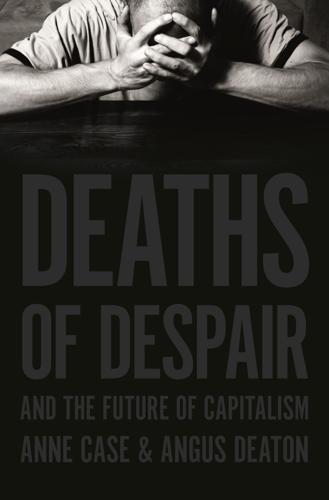
Deaths of Despair and the Future of Capitalism
by
Anne Case
and
Angus Deaton
Published 17 Mar 2020
Over the next three years, life expectancy rose by 3.2 years for men and by 1.3 years for women, driven by rapid decreases in mortality from alcohol-related causes (suicides, accidents, and heart disease). The policy was enormously unpopular and reduced government revenues, and it was officially terminated in 1988, though it took some time to unwind. Of course, the policy then got swept up in larger historical events, particularly the dissolution of the Soviet Union at the end of 1991. The improvements in life expectancy rapidly reversed themselves, and life expectancy fell between 1987 and 1994 by 7.3 years for men and by 3.3 years for women, with some rebound thereafter.23 By the early years of the twenty-first century, life expectancy for both men and women was close to where we might have expected it to be based on the (unfortunate) trends through the 1960s and 1970s, as if there never had been an alcohol campaign and as if the Soviet Union had never collapsed.
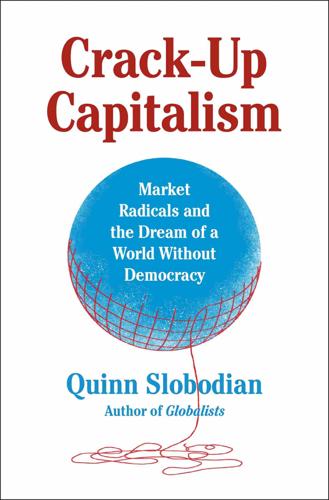
Crack-Up Capitalism: Market Radicals and the Dream of a World Without Democracy
by
Quinn Slobodian
Published 4 Apr 2023
But paleolibertarians would say the same about whites preferring the ‘white thing’ or Asians the ‘Asian thing.’”31 The revival of secession at the end of the Cold War looked to paleo-libertarians like a prime opening for a new political geography. “This is what it must have been like living through the French Revolution,” Rothbard wrote. “History usually proceeds at a glacial pace … And then, wham!”32 Of the dissolution of the Soviet Union, Rothbard remarked that it was “a particularly wonderful thing to see unfolding before our very eyes, the death of a state.”33 By this he meant, of course, both a specific state but also, optimistically, the death of states altogether. Secession was the means; anarcho-capitalist society was the end.
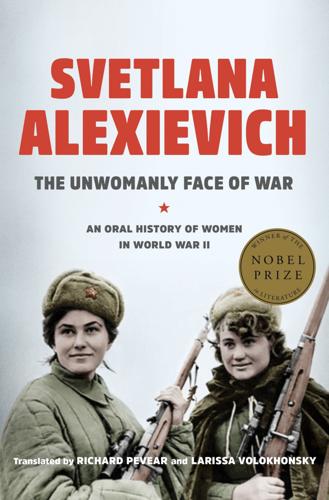
The Unwomanly Face of War: An Oral History of Women in World War II
by
Svetlana Alexievich
Published 1 Jan 1985
The term refers to the deliberately created famine of 1932–1933 in Ukraine, which cost many millions of lives. *7 The Soviet acronym for “collective farm.” *8 Gorbachev’s perestroika: The “restructuring” begun in 1986 under Mikhail Gorbachev (1933–), the last General Secretary of the Communist Party and head of state until the dissolution of the Soviet Union in 1991. *9 The German novelist Erich Maria Remarque (1898–1970) is best known for his novel All Quiet on the Western Front (1928), about the harsh experiences of German soldiers during World War I. His works were banned and publicly burned by the Nazis in 1933. *10 German for “police,” but the term was also applied to Russian collaborators
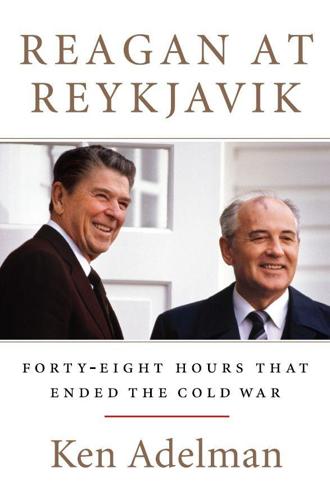
Reagan at Reykjavik: Forty-Eight Hours That Ended the Cold War
by
Ken Adelman
Published 5 May 2014
When Gorbachev called Dobrynin home in 1986 to be the powerful head of the international department of the Communist Party Central Committee, Reagan asked, “Is he really a Communist?” The answer was decisively yes, even though he did seem too nice and cosmopolitan. As urbane as he was, as much as he enjoyed the cultural and intellectual riches of Western life, he remained a dedicated Communist to the end. He later deemed the dissolution of the Soviet Union an avoidable tragedy caused by the misguided ambitions of incompetent leaders, presumably those along with him on that flight to Reykjavik. Dobrynin was heading there as an adviser to Gorbachev, much as an NSC staff member would advise the U.S. president. His real contribution would stem from his intimate understanding of America and virtually all the Americans who counted in government.

Exponential: How Accelerating Technology Is Leaving Us Behind and What to Do About It
by
Azeem Azhar
Published 6 Sep 2021
Behind the Iron Curtain and in religious autocracies, the early internet was a place to explore ideas that couldn’t be expressed in the national press. The elimination of the government-controlled middleman, the radio or TV broadcaster, meant protesters could express themselves freely. The failed coup of August 1991 that led to the dissolution of the Soviet Union is a great example. Protestors were able to signal across the fledgling internet that there was a coup underway, even as the unsuccessful rebels shut down CNN and other mass media.42 More broadly, the constant criss-crossing of data – in which ideas might spread from Edinburgh to Évian, Mumbai to Manhattan – helped build a uniquely international culture online.

After the Fall: Being American in the World We've Made
by
Ben Rhodes
Published 1 Jun 2021
“If I need inspiration,” he joked, “I would go to a Russian court, because what a Russian judge would do would give me inspiration.” There was one more source of anger as well: anger at himself. When Navalny was growing up, the Russian parliament had challenged Yeltsin’s policies of liberalization in the early 1990s, right after the dissolution of the Soviet Union. A tense standoff ensued. The parliament attempted to impeach Yeltsin, and Yeltsin attempted to dissolve the parliament. Things came to a head that October when Yeltsin responded to demonstrations with military force. More than a hundred people were killed and hundreds more wounded in street battles that went on for nearly two weeks.
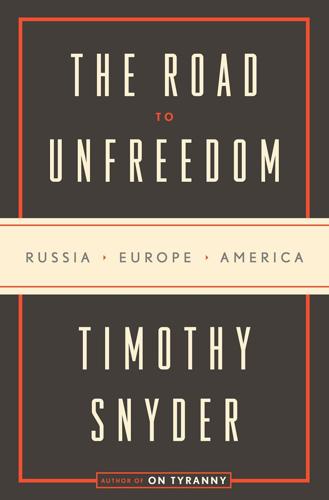
The Road to Unfreedom: Russia, Europe, America
by
Timothy Snyder
Published 2 Apr 2018
The men (and one woman) were shot in the back of the head at five killing sites, one of them the Katyn Forest, near Smolensk in the Russian republic of the Soviet Union. For Poles, the Katyn massacre came to stand for Soviet repression generally. After the Second World War, Poland was a communist regime and a Soviet satellite, so Katyn could not be discussed. Only after the dissolution of the Soviet Union in 1991 could historians clarify what had happened. Soviet documents left no doubt that the mass murder had been deliberate policy, personally approved by Joseph Stalin. Since the end of the Soviet Union, the new Russian Federation had been struggling to address the legacy of Stalinist terror.
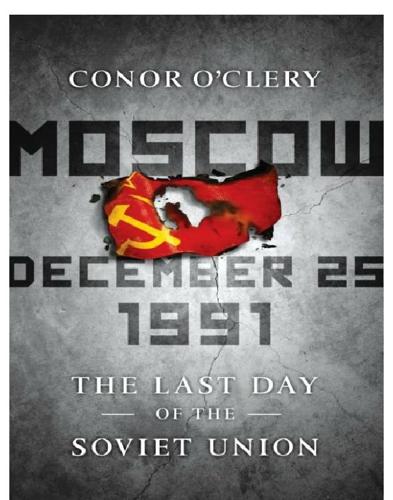
Moscow, December 25th, 1991
by
Conor O'Clery
Published 31 Jul 2011
He reaches into his pocket and draws out his Mont Blanc ballpoint, a twenty-fifth wedding anniversary present from his wife, Edwina. The sudden movement alarms the three security officials in the room. “They did everything but draw AK-47s,” laughs Caudill. “Gorbachev says to them, ‘Nyet, nyet!’”3 “We were about to go live on Russian television and around the world with the resignation of Mikhail Gorbachev, the dissolution of the Soviet Union, and the conveyance of power to Boris Yeltsin,” recalled Johnson. “And I am standing one person away from Gorbachev within, say, forty-five seconds to a minute before air time. He takes this green Soviet-made pen out to just test it.... And it didn’t work.... And I just reached in my pocket and I said, ‘Mr.
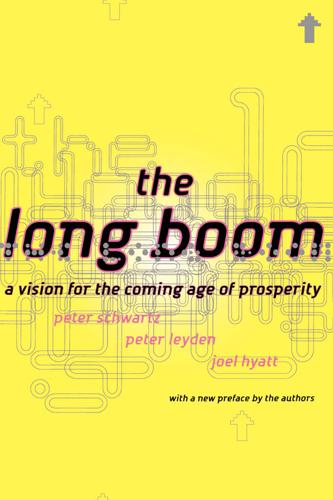
The Long Boom: A Vision for the Coming Age of Prosperity
by
Peter Schwartz
,
Peter Leyden
and
Joel Hyatt
Published 18 Oct 2000
They didn't have much of a history of initiative or enterprise or even hard work. So the Russians soon found that they needed to do some serious work on establishing the civil institutions a society needs for a market economy and a democracy to take hold and ultimately thrive. In the heady days of the dissolution of the Soviet Union, people talked about a new Russia rising within the decade. As the 1990s dragged on, and as the economic and political problems of Russia mounted, the reality sank in that the difficult transition would take longer. But Russians are beginning to understand they lost out badly by their inaction in the early 1990s, by their failure to understand the importance of the rule of law and a sound court system.
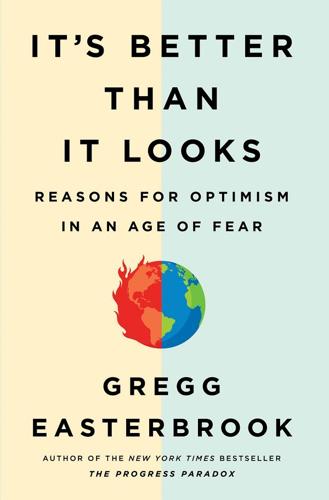
It's Better Than It Looks: Reasons for Optimism in an Age of Fear
by
Gregg Easterbrook
Published 20 Feb 2018
Beijing’s recent relapse toward censorship shows that its leadership class considers clinging to power more important than consent of the governed—China is staging a “Great Leap Backward” in which “dissent is not permissible,” The Atlantic said in 2016. China will grow much stronger if it becomes a democracy rather than stays mired in its current amalgam model of economic freedom without political freedom. Mikhail Gorbachev, who presided over the dissolution of the Soviet Union, said in 2016 that the next step for Russia should be switching to democracy, “not in the future but right now.” We’d like to think Gorbachev made this statement for moral reasons. Maybe he was looking at economic data. THE GUNS OF AUGUST THAT sounded in 1914 matched the autocracies of Germany, Bulgaria, and the old Ottoman and Austro-Hungarian Empires against the democracies of the United Kingdom, French Third Republic, Canada, United States, Australia, Italy, and Japan, with monarchist Russia and Serbia as wild cards.

The Quest: Energy, Security, and the Remaking of the Modern World
by
Daniel Yergin
Published 14 May 2011
Petersburg nearly ran out of dairy products for children. In November 1991, Gorbachev asked one of his aides to send British prime minister John Major, at that time head of the G7 group of industrial nations, a three-word message—“Dear John, Help!”6 It was just a month later that Gorbachev went on television to announce the dissolution of the Soviet Union. A NEW RUSSIA: “NO ONE’S AT THE CONTROLS” From January 1, 1992, Russia was an independent state, a huge one, traversing eleven time zones. The centrally planned socialist economy of the Soviet Union, where virtually every action in the entire economy was the result of bureaucratic decisions, had disintegrated, leaving economic chaos and uncertainty.
…
What would be the nature of Russia’s relations with the newly independent states, many of which had been khanates in the centuries before their conquest by the Russian Empire but had never really existed as modern nation-states? For the Russians, it was about power and position and restoring their country as a great power. They had hardly expected the Soviet Union to fall apart. Many Russians had come to regret this loss and regarded the dissolution of the Soviet Union as a nation (if not as a communist state) as a humiliation, as something that had been foisted upon them by malevolent forces from outside, specifically in the view of some, the United States. Immediately after the breakup, they began to describe these newly established countries as belonging to a newly conceived region, the “Near Abroad,” over which they wanted to reassert control.
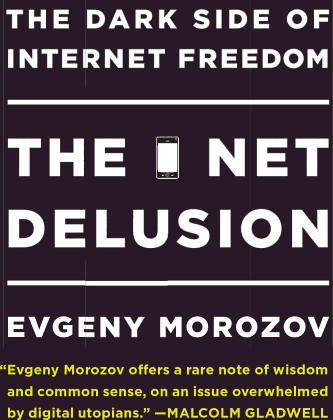
The Net Delusion: The Dark Side of Internet Freedom
by
Evgeny Morozov
Published 16 Nov 2010
To say that there is no good blueprint for dealing with modern authoritarianism would be a severe understatement. Lost in their own strategizing, Western leaders are pining for something that has guaranteed effectiveness. Many of them look back to the most impressive and most unambiguous triumph of democracy in the last few decades: the peaceful dissolution of the Soviet Union. Not surprisingly—and who can blame them for seeking to bolster their own self-confidence?—they tend to exaggerate their own role in precipitating its demise. As a result, many of the Western strategies tried back then, like smuggling in photocopiers and fax machines, facilitating the flow of samizdat, and supporting radio broadcasts by Radio Free Europe and the Voice of America, are given much more credit than they deserve.
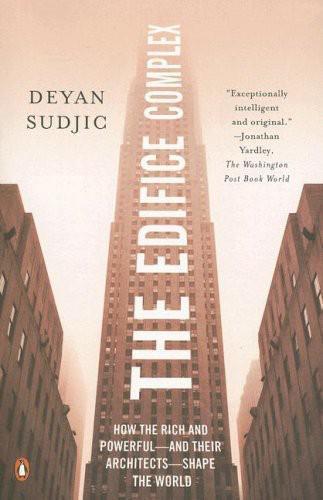
The Edifice Complex: How the Rich and Powerful--And Their Architects--Shape the World
by
Deyan Sudjic
Published 27 Nov 2006
The new church, like the monstrous Peter the Great statue across the river, is the product of Moscow’s mayor Luzkhov and Zurab Tsereteli, who was responsible for decorating the interior. Boris Yeltsin himself laid the foundation stone. And the gold leaf, applied by the bucketful to the domes, was paid for by the oligarchs who, with indecent speed, made themselves enormously wealthy during the dissolution of the Soviet Union. The building of the original nineteenth-century basilica marked one important assertion of Russia’s identity; its destruction was an attempt radically to redefine that identity; and its rebuilding is yet a third watershed in the power struggles shaping modern Russia. Tsar Alexander I commissioned Karl Vitberg in 1817 to design a cathedral of a scale and grandeur to reflect Russia’s rank as a mighty and expansive state.
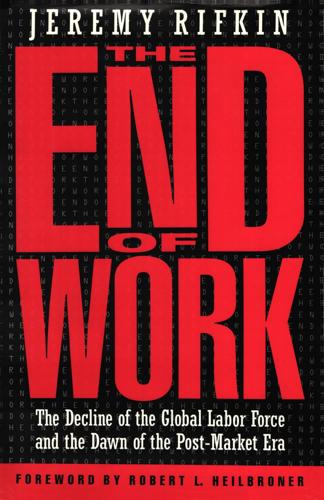
The End of Work
by
Jeremy Rifkin
Published 28 Dec 1994
In the United States many of the cuts are occurring in defense. The military-industrial complex, which played a critical role in maintaining the economic prosperity of the country for more than half a century, is now being downsized in the aftermath of the Cold War. The dismantling has occurred suddenly, largely in response to the dissolution of the Soviet Union. In the 1980s the Pentagon budget was still growing by 5 percent a year, reaching a high of $371 billion in 1986. During the Reagan years, the number of Americans working in defense industries or employed directly in the armed forces totaled 6.7 million, or 5.6 percent of the labor force.
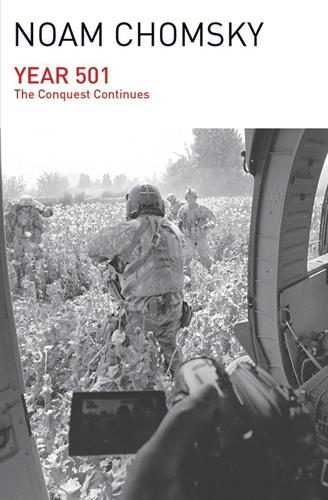
Year 501
by
Noam Chomsky
Published 19 Jan 2016
Many economists consider the major factor in the Bush recession to be the cutback in military procurement-orders placed with factories, which have not only accounted for a healthy segment of the output of goods and services but have had a substantial multiplier effect, creating jobs in companies that produce consumer goods for the relatively high-paid workers in companies that are profitable thanks to the taxpayer subsidy. “The impact is bigger than you can see by just looking at the numbers,” conservative economist Herbert Stein of the American Enterprise Institute notes. “The abrupt dissolution of the Soviet Union” has undermined the device instituted to maintain the economy after World War II, Times economics correspondent Louis Uchitelle reports, and “leading military companies” like General Electric are in trouble, as is high-tech industry generally.17 The old pretexts are gone, and it is no longer so simple to hail the virtues of free market capitalism while feeding at the public trough.
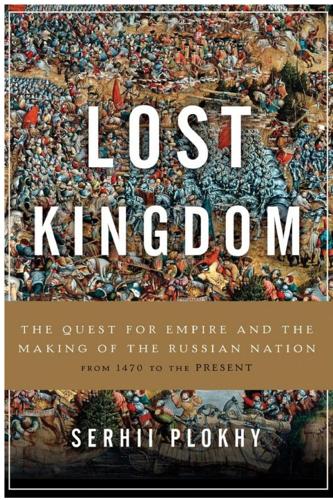
Lost Kingdom: The Quest for Empire and the Making of the Russian Nation
by
Serhii Plokhy
Published 9 Oct 2017
But the nationalists who voted for Yeltsin saw Russian institutions as an instrument for enhancing Russian identity, providing support for Russian culture, and cutting financial support for the Union republics, which they claimed were bleeding the Russian economy white. But no one advocated the dissolution of the Soviet Union. In the summer of 1991, by creating an alliance with leaders of other republics, Yeltsin forced the embattled Gorbachev to agree to a reform of the Union that would benefit Russia and other well-to-do republics. The new Union treaty negotiated by Gorbachev, Yeltsin, and Nursultan Nazarbayev of Kazakhstan in July 1991 gave the preponderance of economic and political power to the republican leaders, first and foremost to the leader of Russia.

Apocalypse Never: Why Environmental Alarmism Hurts Us All
by
Michael Shellenberger
Published 28 Jun 2020
In 1970, when fears of overpopulation were at their peak, Earth Day was held in the midst of national turmoil over the Vietnam War. In 1983, during heightened Cold War tensions, more than 300,000 people protested in London’s Hyde Park against nuclear weapons. And in the early 1990s, climate change emerged as the new apocalyptic threat at the end of the Cold War. After the dissolution of the Soviet Union, people in the West no longer had an external enemy against which to direct their negative energy and define themselves. “Being the sole winner in a conflict means concentrating on oneself all the criticism that could earlier be deflected onto others,” observed Pascal Bruckner in The Fanaticism of the Apocalypse.61 In the wake of the 2016 elections in Britain and the United States, where voters rejected, in one way or another, the established global order, climate alarmism grew more extreme.

The Future Is Asian
by
Parag Khanna
Published 5 Feb 2019
Europe and Asia are the two most significant regions in global trade, and their trade with each other comprises a greater trade volume than any other pair of regions. As infrastructural linkages and trade agreements expand, Eurasian trade is accelerating and far outstripping either region’s trade with North America. The biggest geopolitical phenomena of the past three decades have come in rapid succession: the dissolution of the Soviet Union, the consolidation of the European Union, the rise of China, the US shale energy revolution, and now the emergence of an Asian system. Global order is about the distribution of power and how that power is governed. The anchor of global order isn’t necessarily a single country or set of values, as was the case with the currently waning Western liberal international order.
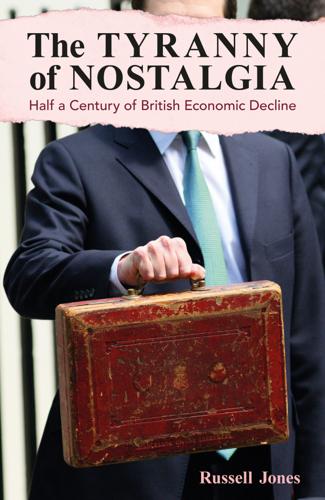
The Tyranny of Nostalgia: Half a Century of British Economic Decline
by
Russell Jones
Published 15 Jan 2023
This reflected the success of the General Agreement on Tariffs and Trade (GATT) negotiations in reducing trade barriers (which resulted in cheaper and improved transport and communications infrastructure) and gains from specialization as developing countries became more important producers and exporters of manufactures. The economic liberalization that followed the dissolution of the Soviet Union in 1991 brought much of eastern Europe into the world economy, but the most crucial new entrant at this time was China. In purchasing power parity terms, China’s shares of global exports and GDP doubled from 1.0% and 2.0%, respectively, in 1980 to 2% and 4% in 1990, and then doubled again to 4% and 8% by 2000.
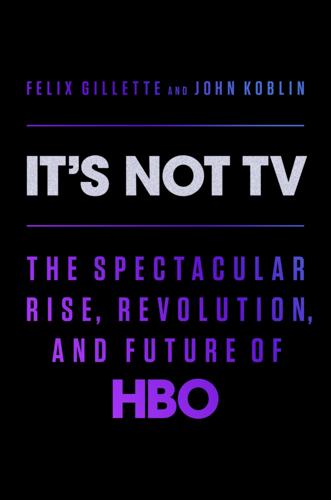
It's Not TV: The Spectacular Rise, Revolution, and Future of HBO
by
Felix Gillette
and
John Koblin
Published 1 Nov 2022
In November 1992, on the seventy-fifth anniversary of the Russian Revolution, HBO hosted a premiere of Stalin at a theater in Moscow. The screening was attended by the film’s cast, HBO executives, and a collection of Russian dignitaries. The movie, which starred Robert Duvall and featured the cinematography of American New Wave legend Vilmos Zsigmond, had been shot during the tumultuous dissolution of the Soviet Union. “We filmed in all those recesses of the Kremlin,” says former HBO executive and Stalin producer Ilene Kahn Power. “It will never be done again. It would be like the Russians coming and filming in the Lincoln Bedroom.” When the production had finished shooting, Kahn Power and her team held the wrap party at one of Stalin’s former homes in the city.
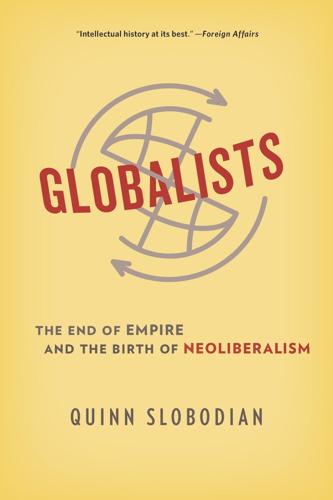
Globalists
by
Quinn Slobodian
Published 16 Mar 2018
Fine-tuning of the trade rules of the multilevel system was necessary to allow the signals to move smoothly, thus creating the conditions for the supple and eternal contortion of individual economic actors to the messages of the market. Conclusion A World of People without a People If we ask what men most owe to the moral practices of those who are called capitalists the answer is: their very lives. —FRIEDRICH A. HAYEK, 1989 Two years after the fall of the Berlin Wall and one month short of the official dissolution of the Soviet Union, George H. W. Bush granted a Presidential Medal of Freedom to Wilhelm Röpke’s correspondent and the defender of racial segregation in the U.S. South, William F. Buckley. Buckley had “raised the level of political debate in this country,” Bush claimed. Without irony, he followed by granting a medal to a civil rights leader.
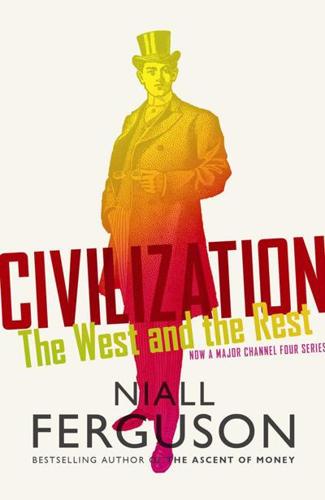
Civilization: The West and the Rest
by
Niall Ferguson
Published 28 Feb 2011
By midnight all the checkpoints had been forced to open and one of the greatest parties of the century was under way, closely followed by one of its biggest shopping sprees. With the fall of the Berlin Wall, the Cold War was essentially over, though it was not until the failed Moscow coup of August 1991 and the subsequent dissolution of the Soviet Union that the Baltic states, Ukraine and Belarus, along with the three big Caucasian republics and the five ‘stans’ of Central Asia, became independent states. Few had seen it coming.* For some it was ‘the end of history’, the definitive victory of the liberal capitalist model.108 For others it was the ‘triumph of the West’, the political achievement of three charismatic leaders: Ronald Reagan, Pope John Paul II and Margaret Thatcher.109 A third view gave the credit to nationalism.
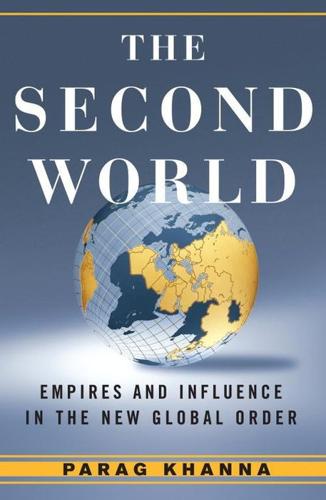
Second World: Empires and Influence in the New Global Order
by
Parag Khanna
Published 4 Mar 2008
Since Peter the Great moved Russia’s capital to St. Petersburg in the early eighteenth century, every Russian contact with the West has exposed it as materially inferior, awakening both its national consciousness and its masochistic soul.1 The decade of “hot tub and vodka” diplomacy after the dissolution of the Soviet Union numbed Russia’s leaders to their strategic predicament: Because Russia remains so big, neither the United States nor Europe nor China wants it to be strong. In their gilded chambers today, however, the Kremlin’s most recent ruling clique is suffering from the resulting imperial hangover, profoundly angry at the once-mighty empire’s diminished standing.2 Russia’s diplomatic position is purely residual: If it neglected to show up (or fell out of its chair) at major negotiations on the Arab-Israeli conflict or the North Korean and Iranian nuclear programs, the outcomes would be no different—America, Europe, and China are far more influential arbiters.
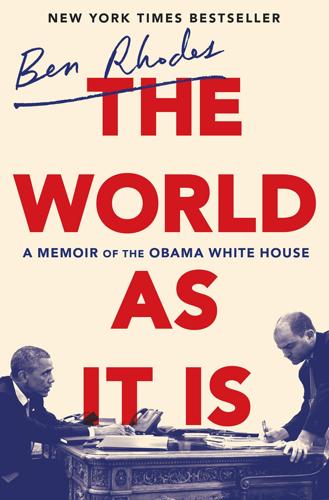
The World as It Is: A Memoir of the Obama White House
by
Ben Rhodes
Published 4 Jun 2018
Wisner had had a long career at the State Department, serving as ambassador four times, including five years in Egypt at the end of the Cold War. As the protests picked up, Obama accepted a recommendation from Hillary to send Wisner to Cairo as a special envoy. He was someone whom Mubarak trusted, a reminder of a better time when our countries were in lockstep during the dissolution of the Soviet Union. Wisner’s difficult task was to counsel Mubarak to initiate a transition in Egypt. The last words I heard Obama say to him as he set out on his mission were straightforward: “Be bold.” Wisner succeeded in securing Mubarak’s promise not to seek another term as president, but that wasn’t enough for the people in the streets, or for Obama.
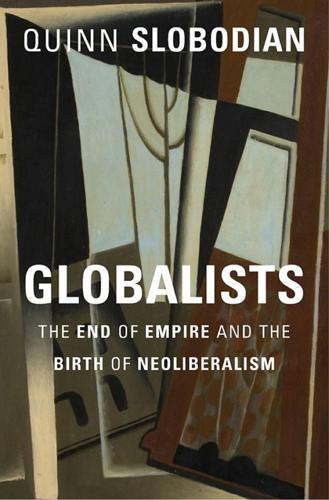
Globalists: The End of Empire and the Birth of Neoliberalism
by
Quinn Slobodian
Published 16 Mar 2018
Conclusion A World of P eople without a People If we ask what men most owe to the moral practices of t hose who are called capitalists the answer is: their very lives. —f riedrich a. hayek, 1989 T wo years a fter the fall of the Berlin Wall and one month short of the official dissolution of the Soviet Union, George H. W. Bush granted a Presidential Medal of Freedom to Wilhelm Röpke’s correspondent and the defender of racial segregation in the U.S. South, William F. Buckley. Buckley had “raised the level of political debate in this country,” Bush claimed. Without irony, he followed by granting a medal to a civil rights leader.

The Rise and Fall of the Neoliberal Order: America and the World in the Free Market Era
by
Gary Gerstle
Published 14 Oct 2022
This right-wing version of Gorbachev, whom we might call “alt-Gorbachev,” would still have embraced glasnost and perestroika in 1985; but he would have repudiated the former in 1989 and 1990, once it became clear that a continued commitment to democracy would lead to the destruction of the Communist Party’s power and then to the dissolution of the Soviet Union. Thus, alt-Gorbachev would have opted in 1990 and 1991 for capitalist development within an authoritarian political framework, much as Deng was then doing in China. The Soviet democratic dissidents would have been crushed, as the Chinese ones were in Tiananmen Square, and the Soviet Union would have remained intact.
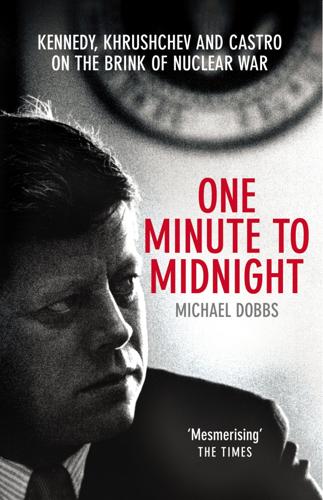
One Minute to Midnight: Kennedy, Khrushchev and Castro on the Brink of Nuclear War
by
Michael Dobbs
Published 3 Sep 2008
It had originally been built for Stalin's putative successor as Soviet prime minister, Georgi Malenkov, who was quickly pushed aside by the more forceful Khrushchev. After Malenkov's disgrace, the estate was taken away from him and turned into a government guest house. Novo- Ogaryevo would achieve greater fame decades later as the presidential retreat of Mikhail Gorbachev and the site of negotiations that led to the dissolution of the Soviet Union in 1991. The Presidium members were seated in front of the first secretary along the long, polished oak table. The eighteen attendees included Andrei Gromyko, the foreign minister, and Rodion Malinovsky, the defense minister. Aides hovered in the background, to be summoned and dismissed as needed.
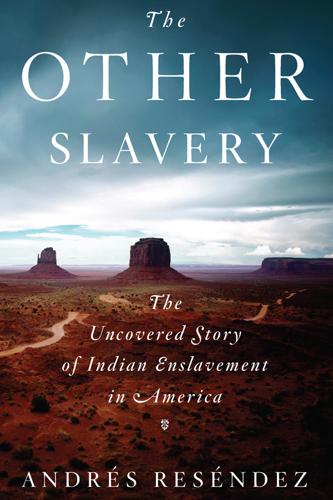
The Other Slavery: The Uncovered Story of Indian Enslavement in America
by
Andrés Reséndez
Published 11 Apr 2016
Many social scientists trace the beginnings of the new slavery to the end of World War II or even later, to the economic liberalization of the 1980s and 1990s. Some place the blame on “globalization,” that ill-defined catchall term with its popular connotation of newness. They point to the dissolution of the Soviet Union and its related economic dislocations as the origin of the sex trade involving Eastern European women, or to the opening up of the economies of the developing world over the past thirty years, which has led to the proliferation of sweatshops to make products for the developed world. One cannot deny that such situations have indeed promoted and accelerated the traffic and exploitation of humans.

There Is Nothing for You Here: Finding Opportunity in the Twenty-First Century
by
Fiona Hill
Published 4 Oct 2021
In the UK, Alston was specifically asked to examine the impact of the government’s social service cuts since 2010 on the country’s most vulnerable populations. He visited the North East of England as well as other deprived regions. And what he found there was brutal—a crisis reminiscent of that of Russia in the 1990s, when the whole country had fallen off a cliff and spiraled into poverty after the dissolution of the Soviet Union. The budgetary retreat from the UK’s postwar welfare system had had the same effect on the country’s most vulnerable regions and populations as the USSR’s wholesale collapse and ten years of shock therapy. Indeed, the policies of the post–Great Recession British and post-Soviet Russian governments were similar, as were their goals: cut government spending to the bare minimum, restore fiscal discipline, and hopefully, eventually, at some point, boost the country’s economic competitiveness.
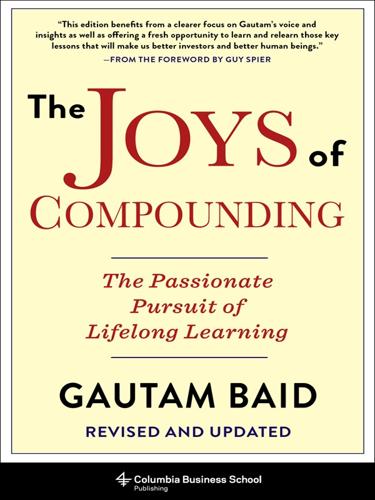
The Joys of Compounding: The Passionate Pursuit of Lifelong Learning, Revised and Updated
by
Gautam Baid
Published 1 Jun 2020
In his 1994 annual letter to shareholders, he wrote: We will continue to ignore political and economic forecasts, which are an expensive distraction for many investors and businessmen. Thirty years ago, no one could have foreseen the huge expansion of the Vietnam War, wage and price controls, two oil shocks, the resignation of a president, the dissolution of the Soviet Union, a one-day drop in the Dow of 508 points, or Treasury bill yields fluctuating between 2.8 percent and 17.4 percent. But, surprise—none of these blockbuster events made the slightest dent in Ben Graham’s investment principles. Nor did they render unsound the negotiated purchases of fine businesses at sensible prices.
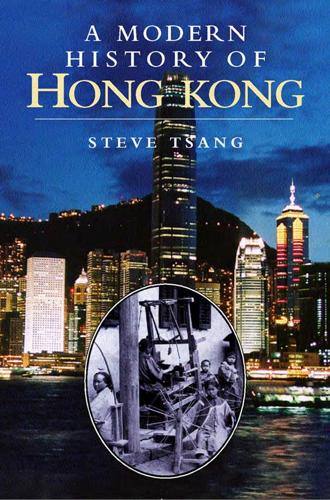
A Modern History of Hong Kong: 1841-1997
by
Steve Tsang
Published 14 Aug 2007
Seeing it essentially in terms of a British challenge to Chinese sovereign authority, the reaction was to take a tough stand.105 The old mistrust expressed by Deng was revived – ‘someone would not implement in full’ the Joint Declaration.106 Building on such a suspicion, the Chinese even saw it as part of a wider conspiracy.107 As Zhou Nan explained, the British mistakenly believed that ‘after the dissolution of the Soviet Union, China would also face the same kind of changes’. They thus wanted to ‘use proxies installed with their help to extend British colonial rule, turn Hong Kong into a semi-independent political entity, and unrealistically wish to influence political developments in China’.108 The PRC leadership thus decided to face this British challenge squarely and win at all costs.109 The PRC hardened its position after the Governor visited Beijing in October.
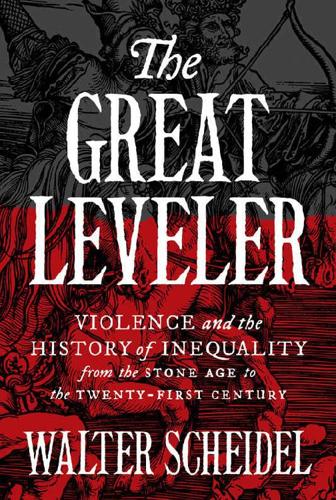
The Great Leveler: Violence and the History of Inequality From the Stone Age to the Twenty-First Century
by
Walter Scheidel
Published 17 Jan 2017
In 2014, the State Fragility Index of the Center for Systemic Peace assigned the world’s worst scores to the Central African Republic, South Sudan, the Democratic Republic of Congo, Sudan, Afghanistan, Yemen, Ethiopia, and Somalia. With the single exception of Myanmar, the seventeen next most fragile countries are also located in Africa or the Middle East. Although the dissolution of the Soviet Union and Yugoslavia in the early 1990s as well as ongoing events in Ukraine demonstrate that even industrialized middle-income countries are by no means immune to disintegrative pressures, contemporary developed countries—and, indeed, many developing ones—are highly unlikely to go down the same path.
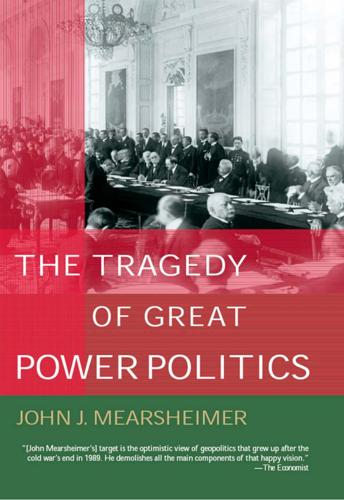
The Tragedy of Great Power Politics
by
John J. Mearsheimer
Published 1 Jan 2001
Marshal Nikolai Ogarkov was dismissed as the chief of the Soviet general staff in the summer of 1984 for saying publicly that Soviet industry was falling badly behind American industry, which meant that Soviet weaponry would soon be inferior to American weaponry.54 Soviet leaders recognized the gravity of the situation and tried to fix the problem. But their economic and political reforms went awry, touching off a crisis of nationalism, which not only allowed the United States to win the Cold War but shortly thereafter led to the dissolution of the Soviet Union. This discussion of the importance of wealth for building military power might suggest that the distribution of latent power among states should roughly reflect the distribution of military power, and therefore it should be feasible to equate the two kinds of power. My argument that great powers aim to maximize their share of world power might reinforce that notion, since it seems to imply that states will translate their wealth into military power at roughly the same rate.
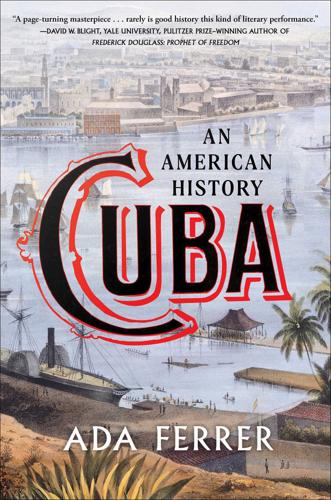
Cuba: An American History
by
Ada Ferrer
Published 6 Sep 2021
The governor refused, so Maceo pledged to continue the war. The meeting between Maceo and the Spanish governor is well-traveled territory in Cuban history. Known as the Protest of Baraguá, it has come to represent the principle of no surrender. More than a century later, in the early 1990s, after the fall of the Berlin Wall and the dissolution of the Soviet Union, billboards across the island announced that Cuba itself was an “eternal Baraguá.” As Eastern Europe surrendered to capitalism, the signs implied, Cuba would continue the fight. The billboards did not mention that despite his noble and fiery intentions, Maceo had no choice but to lay down his weapons soon after that defiant protest.

The Marshall Plan: Dawn of the Cold War
by
Benn Steil
Published 13 Feb 2018
It was dissolved on July 1. He pressed the outgoing members for commitments that they would not join NATO or the EC, but this plea also failed.24 Soon after, top members of his government, including Prime Minister Valentin Pavlov and Defense Minister Dimtry Yazov, determined to prevent the dissolution of the Soviet Union itself, decided to take radical action. Yazov, who had virulently opposed East Germany’s absorption into NATO, told Bush’s national security adviser Brent Scowcroft, on July 31, that “NATO was the threat” which now concerned Russia.25 On August 19, he and his fellow conspirators detained Gorbachev and took power.
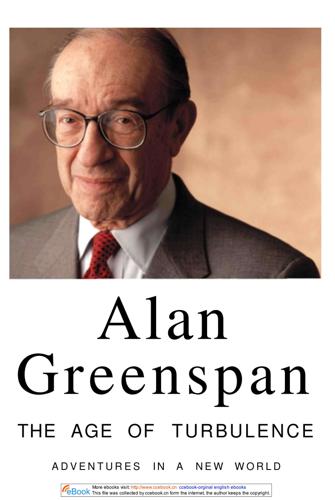
The Age of Turbulence: Adventures in a New World (Hardback) - Common
by
Alan Greenspan
Published 14 Jun 2007
Russia's economic policymakers are confronted with a daunting dilemma: a faster rise in the ruble exchange 328 More ebooks visit: http://www.ccebook.cn ccebook-orginal english ebooks This file was collected by ccebook.cn form the internet, the author keeps the copyright. RUSSIA'S SHARP ELBOWS rate will foster the spread of Dutch disease, but foreign-asset purchases to slow the rising foreign-exchange value of the ruble may uncork inflation, depending on the mechanism used. Either would undo much of the economic progress Russia has made since the dissolution of the Soviet Union. Dutch disease symptoms are already evident. As oil and gas exports surged, the value of the ruble rose and the value of Russian noncommodity exports lagged. Between 1998 and 2006, the value of the ruble relative to the currencies of Russia's trading partners doubled, after adjusting for their relative inflation rates.
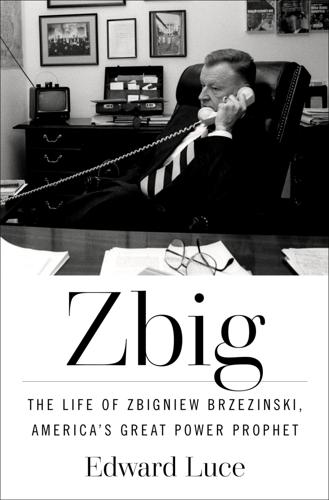
Zbig: The Life of Zbigniew Brzezinski, America's Great Power Prophet
by
Edward Luce
Published 13 May 2025
Scowcroft’s official and incognito trips had been the spark. “[They] make a mockery of our profession of concern for human rights and the stated ideals of our democratic system,” said George Mitchell, a Democratic senator from Maine.103 Sometime between the end of the Cold War in 1989 and the dissolution of the Soviet Union in 1991, Brzezinski misplaced his geopolitical cheerfulness. Until that triumphal denouement, his mind was dominated by the Cold War. His view was that the Soviet model was doomed and that the US system was inherently superior. Kissinger was the pessimist; Brzezinski was very much the optimist.
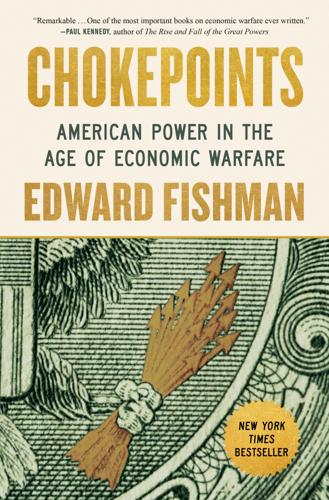
Chokepoints: American Power in the Age of Economic Warfare
by
Edward Fishman
Published 25 Feb 2025
From 1989 to 1991, Chinese officials experienced what the scholar Rush Doshi dubbed a “traumatic trifecta.” First there were the Tiananmen Square protests, which showed the CCP how Western liberal ideology could lead to unrest at home. Then came the Gulf War, which demonstrated America’s vast and increasingly unrivaled military might. Finally, the dissolution of the Soviet Union removed the main counterweight to American power and underscored the existential threat the United States posed to Communist regimes. To leaders in Beijing, these three events cemented America’s status as China’s chief adversary. But they also laid bare the risks of confronting that adversary head-on.
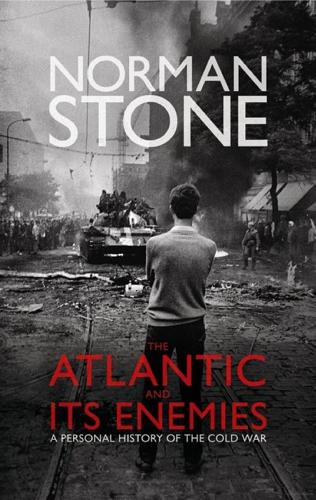
The Atlantic and Its Enemies: A History of the Cold War
by
Norman Stone
Published 15 Feb 2010
There are two further French accounts: Françoise Thom, The Gorbachev Phenomenon (1989), and Alain Besançon, Présent soviétique et passé russe (1980). More conventional accounts are John B. Dunlop, The Rise of Russia and the Fall of the Soviet Empire (1995), and, by a veteran of sovietology, Archie Brown, The Gorbachev Factor (1996). Another view is Ben Fowkes, The Dissolution of the Soviet Union (1997). Ronald G. Suny, The Soviet Experiment (1998), is important for the nationality dimension. Charles Maier, Dissolution (1998), shows how the end of East Germany was planned from Moscow. Jens Hacker, Deutsche Irrtümer, Schönfärber und Helfershelfer der SED-Diktatur im Westen (1992), and Stefan Wolle, Die heile Welt der Diktatur (1998), show how it had to be done in the teeth of considerable unenthusiasm from West Germany.
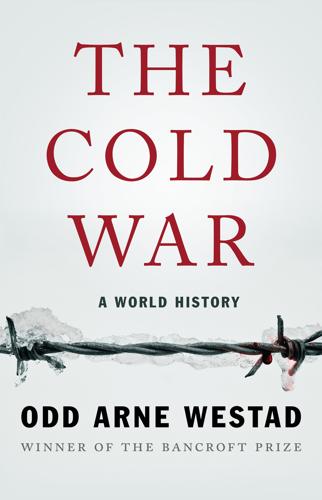
The Cold War: A World History
by
Odd Arne Westad
Published 4 Sep 2017
Thank you very much.”46 As Gorbachev finished his televised address, his military aides carrying the suitcases with the nuclear codes stole quietly away, looking for their new boss in another part of the Kremlin. Gorbachev went alone to the Walnut Room, where members of the Soviet Politburo had often met, for a drink with five of his closest aides. Then, before midnight, he went home, as ex-president of a former country.47 THE DISSOLUTION OF the Soviet Union removed the last vestige of the Cold War as an international system. For two generations it had dominated international affairs, and the ideological struggle that preceded it and on which it fed had lasted even longer. As in most great changes in world politics, the end was sudden but the antecedents were long.
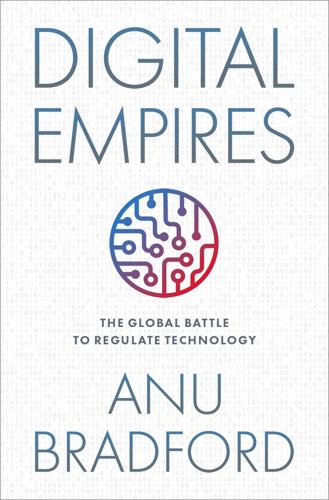
Digital Empires: The Global Battle to Regulate Technology
by
Anu Bradford
Published 25 Sep 2023
Yet the internet freedom agenda extends beyond furthering commercial opportunities for US tech companies. It has also been a deeply ideological, value-driven political project, designed to promote democracy, freedom, and other Western values as part of a larger US foreign policy agenda in the post–Cold War era. After the fall of the Berlin Wall and the dissolution of the Soviet Union, the US’s fear was that the promise of a new era of political freedom could be compromised if the countries around the world started building new “virtual walls” to divide the world by censoring the internet and targeting dissidents online. For example, in 2010, Secretary of State Hillary Clinton drew a comparison to the Berlin Wall and Soviet-style restrictions on press freedom, warning that with growing censorship efforts by authoritarian governments, “a new information curtain is descending across much of the world.”52 The US government was determined to prevent that from happening.
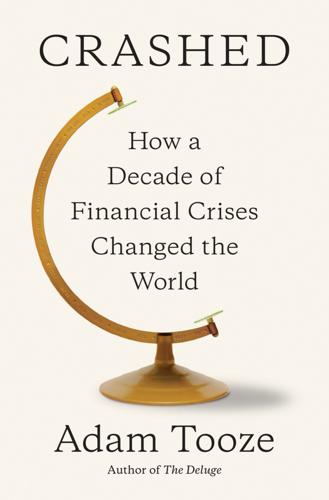
Crashed: How a Decade of Financial Crises Changed the World
by
Adam Tooze
Published 31 Jul 2018
In 1990 French president François Mitterrand favored a conciliatory vision of embracing the former Soviet bloc in a common European security policy that would supersede NATO as well as the Warsaw pact.1 But neither Helmut Kohl nor George Bush wanted anything to do with that. The West had won. It would set the terms for Europe’s reunification. The fall of the Wall and the dissolution of the Soviet Union in December 1991 left Russia shrunken and isolated. Not since the dark days of Lenin’s ruinous peace of Brest-Litovsk in 1918 had Russia been so humbled. Under Yeltsin, Moscow’s relations with the West were friendly. But Russia’s economy was a shipwreck. In the words of George Soros, Russia was “a centrally planned economy with the centre knocked out.”2 In the so-called transitional recession, inflation soared and Russia’s real GDP fell by 40 percent between 1989 and 1995.
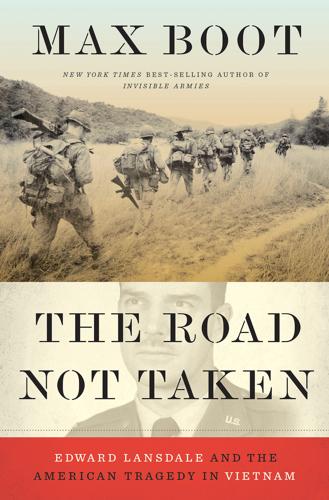
The Road Not Taken: Edward Lansdale and the American Tragedy in Vietnam
by
Max Boot
Published 9 Jan 2018
”37 FOUR YEARS after Edward Lansdale’s death, following the lightning-fast American victory in the 1991 Gulf War, President George H. W. Bush proclaimed, “By God, we’ve kicked the Vietnam syndrome once and for all.” That same year, the Cold War, the conflict to which Lansdale had devoted much of his life, came to an unexpected end with the peaceful dissolution of the Soviet Union. Four years after that, in 1995, President Bill Clinton restored diplomatic relations with Hanoi. By then, Le Duan, the hard-liner who had displaced Ho Chi Minh and guided North Vietnam to victory, was long dead; he had predeceased Lansdale in 1986. His successors had pulled Vietnamese troops out of Cambodia and adopted a market-based economic policy known as Doi Moi that was unveiled just months before Lansdale’s death.
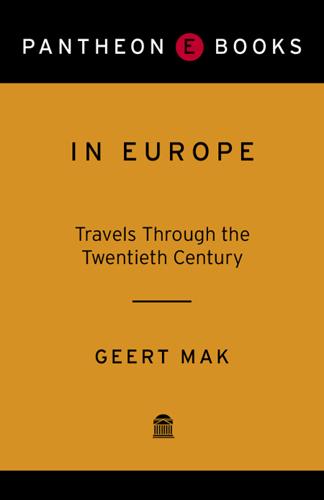
In Europe
by
Geert Mak
Published 15 Sep 2004
The gigantic trading network of old Russia and the former Soviet Union has been tossed for a loop, the new nationalism has thrown up thousands of new obstacles, and the consequences are being felt everywhere: in the Lithuanian border town that lives off exports to Russia, in the vacant tourist hotels of Moscow and Kiev, in the port of Odessa where shipping revenues have gone down by two thirds since the dissolution of the Soviet Union, in the dozens of bankrupt ships lying here off the coast, waiting. I wander into the Literature Museum. Beside Babel's lone spectacles – in a panic, he left them lying on his nightstand when he was arrested on 15 May, 1939 – I actually find a few old copies of Moryak. They date from 1921, they are printed on the back of packaging material used to ship tea, and they include Paustovsky's first stories.
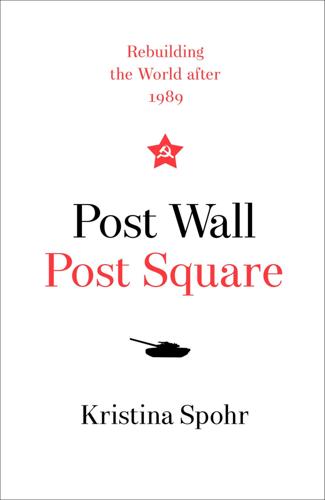
Post Wall: Rebuilding the World After 1989
by
Kristina Spohr
Published 23 Sep 2019
Hutchings American Diplomacy p. 292 Back to text 233. GHWBPL NSC Barry Lowenkron Files – NATO Files, NATO: NAC/NACC Ministerials – December 1991 Brussels, Cable from US Mission NATO to Sec State – NATO: NACC Ministerial Summary Report 20.12.1991 pp. 1–3 + NACC Ministerial Declaration – Soviet Union ends as Meeting Ends 4pp. ‘Dissolution of the Soviet Union Announced at Nato Meeting’ 1.1.1992 NATO. Friedman ‘Yeltsin Says Russia Seeks to Join NATO’. For the ‘North Atlantic Cooperation Council Statement on Dialogue, Partnership and Cooperation’, Press Communiqué M-NACC-1(91)111 NAC 20.12.1991 NATO Back to text 234. Plokhy The Last Empire pp. 295–316; Reynolds One World Divisible p. 575 Back to text 235.
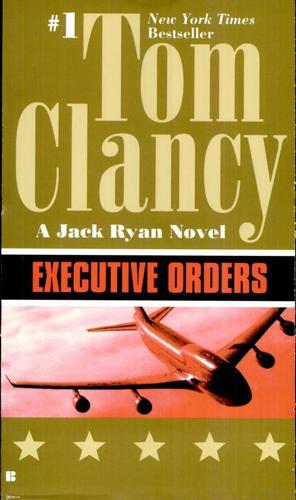
Executive Orders
by
Tom Clancy
Published 2 Jan 1996
When he'd established the country's central-planned economy, Stalin had made a deliberate effort to spread out production sites, so that each segment of the vast empire would depend for vital commodities upon every other, but he'd overlooked the discordant fact that if the entire economy went to pot, then needing something you couldn't get from one source meant that you had to get it from another, and with the dissolution of the Soviet Union, smuggling, which had been well controlled under Communist rule, had become a genuine industry of its own. And with wares also came ideas, hard enough to stop, and impossible to tax. The only thing lacking was a welcoming committee, but that wouldn't have done. The corruption of the border guards went both ways.